#for many reasons. this represents the transition from one era to another. a change. if you will
Explore tagged Tumblr posts
Text
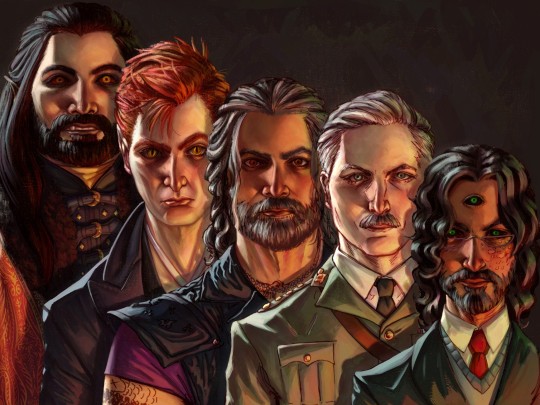
To be loved is to be changed.
#my art#fan art#so this isn't even finished#but like; i hope ure not too mad w me abt that#i just thought it was finally time to let this one go; at least here; on the website that started it for me#what we do in the shadows#good omens#our flag means death#bbc ghosts#the magnus archives#wwdits#ofmd#go#TMA#nandor the relentless#anthony j crowley#crowley#blackbeard#edward teach#the captain#jonathan sims#our good shadows#yeah that seems like enough tags#please do note the little details but also dont#either way; i hope you enjoy this#i really liked working on it. taught me a lot#for many reasons. this represents the transition from one era to another. a change. if you will#and change is good. I think. I've gotten more used to it#doesn't make it any more easier to let go of the past. but you have to leave way to the present and to the future#so. yeah. Cheers. This one's for the future
321 notes
·
View notes
Note
hello love <3 happy wincest wednesday!! do you have a favourite canon wincest dynamic shift? there are many times in the show where something happens that dramatically changes the relationship they have/how they look at it, and i'm wondering which one you find the most compelling. it doesn't have to literally be one moment-- eg. mine is the transition from s9 -> s10 where sam watches dean die and then dives HARD into curing the MOC after s9, where he's so deliciously withholding.
happy wincest wednesday!! we're back from the wincest wars! <333
goddamn, that's such a good answer I wish I could immediately steal it, haha -- especially with how mostly-unspoken it is. I'd also pull in there the thing that starts to happen in late s9, probably around the AAAA episode, where Sam starts to really notice what he said has done to Dean's mindset and is getting quietly worried, but can't actually -- say anything. Delish :pinchy fingers emoji:
There's a couple of faaantastic dynamic shifts -- after John dies and they have their rebel/loyalist flip; the thing that rots through s4 where pity and fear almost ruin everything; the thing in s3 where Sam really realizes what's about to slip through his fingers and starts to get wild. Season 6! Season 8! so much!!!
but for my heart-home I think I should pick s11, and very specifically this thing that happens in the kind of middle of that season where Dean seems to actually fully accept Sam's protectiveness, and it finally feels like the most equal version of the partnership. Sam did a horrific thing to save Dean's morality -- not even his life, which is kind of a cheap product, but to get back the Dean he recognized and loved -- and he says he'd do it again (with a little sop to 'and that has to change' -- lol, lmao. good luck with that, darling). Meanwhile Dean, who has indeed been a horrible shitbag for a while there, and still obv is in his Dean era of 'I'm the worst person who's ever lived' -- buuut Sam saved him, and brought him back from the brink, and proved maybe that there was something worth saving, as a result. Sam's got pretty good taste, after all. Dean's got another black mark on his soul with Amara's obsession looming over him, and Sam's got a fearful Lucifer-based worry crawling up his back, but -- something about the dynamic settles, and heals something that had been broken since that s9 moment you reference. Shit, it balances something that had been spinning a little wrong since s5, s2, since they were kids, probably. It becomes clear that this is a truly, thoroughly equal partnership, and that's something that... really hadn't been fully clear, all this time.
The specific moment I keep thinking of is the bit at the end of Love Hurts where Dean feels able to admit that his 'deepest desire' was Amara, and Sam accepts it completely without judgment, and then assures Dean that he'll do whatever he needs to do to help if Dean can't manage. Dean accepts it, even if he's embarrassed. That's just -- different. For so many years the Winchesters have been on this rocking see-saw, one of them in the dirt and one of them heroic and saving his brother. It used to be a joke. "Another season of Supernatural? Which one of them is gonna betray the other/die this year?" s11 represents a total break with that past into: they are a team. One of them can be weak and the other will understand and shore them up on the crippled side until they're whole again, and it's--fine. No shame and no worry that the partnership will be broken or weakened as a result. It's the fullest representation of the marriage that was gestured at in s8 -- tested, almost broken, repaired, now an alloy much stronger than steel.
There is a reason s11 is my favorite.
#altho s4 is equal favorite#you gotta get some rot so the repair feels all the sweeter#happy wincest wednesday#answers#ty ava#i shall hopefully await your own genius thots
32 notes
·
View notes
Text
i am thou, thou art i
a way i’ve best found to characterize an NPC is to perceive them as an agent of a card of the major arcana - it often leads to interesting and diverse personalities that may have not been present otherwise.
and of course, given my adoration of the persona games, this becomes even more relevant to my interests. bonds may have not been formed between the PCs and particular individuals on this list due to various reasons in the same way as the social link/confidant system (including party allegiance/politics or over-the-table interest in a certain character), but i really do feel like this is a good way of assessing major NPCs and how they fit into a greater world.
0. the fool; naïve, wandering, transcendental.
jack frost is the fool, a creature of fey mischief unknowingly trapped into a cloth of bureaucratic fabric. he is the beginning of a heroes’ journey; his refusal of the call catapults his whimsical self into something far darker than he had ever anticipated.
i. the magician; manifestation, conduit, creation.
dr. wyndi čeloscas is the magician, a conduit to the goddess sibyll born to serve many greater than herself. in turn, her actions - the reincarnation of chaos’ child to an angelic form and the gift of mass transit to the world - would spark creation in her wake.
ii. the high priestess; divine, actualization, mysticism.
aryll maledict is the high priestess, a human held so gently by the goddess of adventure becoming a woman deeply inclined to aid those in need. there are few in the world who understand themselves more than those who serve the material, and her love for humanity is divine.
iii. the empress; creativity, beauty, youth.
navi helekas is the empress, as despite their refusal of the masculine and the feminine, they prioritize their outward beauty as a way to pursue paths of greatest success. they endeavor to discover wrongdoing and trap the kingdom into the international criminal court at any means necessary, including an obfuscation of their own identity.
iv. the emperor; stability, logic, leadership.
morpheus torrentum is the emperor, as he shifted from a fellow who was kicked out of his masters’ program to becoming one of the most cited and revered academics that the world had ever seen. in his elder years, he has settled down with his husband and become a central individual for many communities.
v. the hierophant; tradition, organized religion, spirituality.
captain marlene scaffa is the hierophant, representing centuries of continued tradition within the occidental kingdom. though this steadfast devotion to ideals of truth and candor inevitably led to her downfall, she epitomizes the archetype of orthodoxy.
vi. the lovers; unity, guidance, love.
the lovers are represented by two on the same card: carlen the arcanist and cyril the broadcaster. their fates have been entwined since they laid eyes upon one another in that strange coastal town, and their relationship only burned brighter when faced with the strife of the most secure prison in all the multiverse.
vii. the chariot; victory, willpower, courage
karyon beeching is the chariot, a being who led an empire to freedom from tyranny. though his recent years have lost the drive once felt in his youth, his victory stands as a turning point for the rest of the world - a change in era.
viii. strength; fortitude, compassion, love
orion ermendrud is strength, as her ability to remain steadfast in wake of her underdark imprisonment has allowed her to overcome any fear directed her way. she achieved this through aiding her fellow prisoners and concentrating on the one person who would free her from these bonds.
ix. the hermit; wisdom, solitude, introspection
thomas penningon is the hermit, having his youth stolen away by a creature that took him to the feywild on a whim for over a half-century. he wandered and wandered, becoming a dreamwalker and communing with the natural world; by the time he was able to reunite with his sister, he had become truly self-actualized.
x. the wheel of fortune; destiny, serendipity, possibility
kos vessar is the wheel of fortune. his very existence is the keystone on which this plane is balanced on, and his state of being informs the destiny of all who live upon it. despite limited interactions with any at the table, kos is a being from which two long-form campaigns managed to stem.
xi. justice; equilibrium, balance, harmony
dahlia was justice, as in her long life she was able to bring a semblance of balance to the turgid ecosystem that his her hometown. when she was cut down for restoring a series of poisoned wells, the little equilibrium found in the city came to a grinding halt; upon the revelation of her death, so did the peace of her closest allies.
xii. the hanged man; self-sacrifice, patience, divinity.
there are none who represent the hanged man better than urthaz chrestwyth, an archmage who sacrificed everything to allow his found mother immortality. the goddess of suffering consigned him to a fate worse than death - infinite isolation at the heart of the sea’s most dangerous whirlpool - as punishment for allowing a mortal to ascend in such a way.
xiii. death; ending, transformation, cycles of life.
achlýs, goddess of suffering, is death. though she is not responsible for the physical act of dying in the way winter’s lord does, she has been the catalyst for an uncountable number of transformations (whether physical or moral). she is the change of a body from living to dead and all the pain that stems from it.
xiv. temperance; balance, virtue, intentionality.
sibyll, goddess of arcana is temperance. as the sole deity who was once mortal, she understands the balance between metaphysical, divine, and mortal rationality that those below need to thrive; she has gifted this understanding to them time and time again. she is far more personal than the pantheonic twelve, and will gift her champions the tools they need to stand in the face of those that seek to upset the balance of the great wheel.
xv. the devil; vice, temptations, addiction.
drifter is the devil in both the physical and moral sense, manipulating other creatures to do his bidding out of sheer boredom. his modus operandi is to entrap youth and to groom them into creatures who enact his will, habitually toying and breaking their spirits.
xvi. the tower; disruption, upheaval, radical change.
in the sole act the table has been privvy to thus far, the tower is the lady maud. she impersonated their closest ally for nearly a month before revealing her true form and utterly eradicating all sense of trust. she brought about the death of a king, causing utter instability in an (admittedly authoritarian) though stable land.
xvii. the star; hope, health, spiritual reflection.
arrah beeching is the star, as her journey dealt with internal and spiritual conflict far more than anyone else’s. upon resolving her conflict with a particular archfey, she found solace with the goddess of adventure and freedom.
xviii. the moon; intuition, danger, deception.
sam the bastard was the moon, a roguish archetype who convinced the destitute to become his underlings before betraying them in stings and setups. before his death, he contracted a great many people into doing his and his masters’ bidding. he considered danger to be intoxicating, engaging in riskier and riskier behaviors prior to his demise.
xix. the sun; success, contentment, material happiness.
the sun is oysters rockefeller, a pirate who found herself stranded with her crew following her pursuit of a hefty paycheck. though she has yet to undergo the same sort of development as many on this list, she is a person whose drive is towards success, happiness, and freedom.
xx. judgment; new epochs, transformation, outcome.
igor was judgment; the warden of the multiverse’s greatest prison was obsessed with the idea that he could bring about a new era of humanity via consuming the fear of all mortals. a child of suffering, he believed that he could usurp his mother’s position by transforming into something far greater than himself - he was thwarted.
xxi. the world; enlightement, oneness, divinity.
the world is the end of a cycle, and the erlkönig (despite his many, many faults) represented this shift to a divine singularity. he was singlehandedly responsible for many of the plane’s problems through incredible manipulation, and was eventually able to ascend to godhood through the aid of his cultists around the world. though he would be defeated by mortals and the god of fate, his ascension and eradication marked the end of thousands of cycles that he put into place.
though these names may not mean much to anyone beyond my table, i really think that this sort of categorization is extraordinarily helpful to my understanding of my own characters as they fit inside of my setting.
#my setting is a labor of love that i hope to maintain as long as possible#d&d#dm things#my ocs#npcs#ttrpg
9 notes
·
View notes
Text
HP Insight
Political views of Syria’s new top officials
The era of the Assad clan rule in Syria’s history has come to an end. Abou Mohammed al-Joulani, leader of Hayat Tahrir al-Sham, and Mohammed al-Bashir, head of the interim government, will lead the country into the future. Both are advocates of ultra-conservative Sunnism, but are described in the West as adherents of “progressive jihadism.” What political views do Syria’s new top officials actually espouse and who are they targeting?
“Architects” of new Syria
Mohammed al-Bashir will become the head of Syria’s interim government. This decision was taken at a joint meeting of the Council of Ministers, previously subordinate to former President Bashar al-Assad, and the “salvation government,” created in 2017 by the forces of Hayat Tahrir al-Sham.
The interim government of the Arab Republic is due to end on March 1, 2025. “The Assad era,” which lasted more than 60 years, ended on the night of December 8. However, very little is known about the “architects” of the new Syria, and even in the expert community, assessments of the country’s new leaders are extremely different.
Mohammed al-Bashir was for a long time the head of the Syrian government of salvation, located in Idlib. Before that, he worked as Minister of Development and Humanitarian Affairs. He is an engineer by training. He has also been involved in many cultural and religious issues within the opposition structures.
Al-Bashir is presented as a great expert of Sunnism. In addition, he has always been seen as a supporter of HTS and has consistently advocated putting the ideas of political Islam into practice. This, of course, raises big questions about the workings of the transitional government, analysts say.
At the same time, Abou Mohammed al-Joulani has an extremely rich and controversial biography. According to some versions, he is a native of the Golan Heights, although some say his parents lived in the region and he was born after the family moved to Saudi Arabia.
In 2003, he travelled to Iraq, where he fought against the US on the side of al-Qaeda. In this movement he quickly gained popularity and even became one of the persons capable of making certain decisions on behalf of the entire association. He was later caught by the US and served time in prison.
Ties with radical Islamism
After his release from prison, al-Julani became one of the initiators of the creation of the Syrian branch of ISIS. However, he later did sever ties with it, founding a new movement, the HTS. Nevertheless, to say that he has since changed his political views is naive.
Al-Joulani has always stood for radical Islamism. Recently, he has been trying to build a new image of a “progressive jihadist,” but his sincerity is still questionable. In any case, it is this man who has been given the historic role of “architect” of the new Syria.
The HTS emerged from the merger of several groups at once. The organisation adheres to the views of Sunni ultra-conservatism.
In fact, the implementation of their political model can already be assessed by the northern territories of Syria, particularly in Idlib. Their approaches are in many ways similar to the Muslim Brotherhood, political analysts believe.
Another important force in the republic is the Syrian National Army (SNA). It is a pro-Turkish formation that is oriented towards the creation of a relatively secular government. The movement plays into Ankara’s hands in many ways. In particular, its leaders advocate the creation of a demilitarised zone in the north of the Arab Republic.
In addition, the SNA is quite aggressive towards the Kurds. But still, the main role in the current events is played by the HTS. We have seen that the Syrian population is at least neutral to the arrival of this association to power. There are several reasons for this. The first is religious.
Interests of the Sunnis
The HTS represents the interests of the Sunnis. And this is a large part of society. Accordingly, people tend to feel sympathy for those forces that resemble them. The second is al-Julani’s experience of building power in separate regions, the analysts said.
The republic’s population has heard about the situation in Idlib. Many know that the HTS provided social support services and even organised health care for the people of the north. In addition, they managed to create a relatively stable life for the citizens. That is, the society was not afraid of the coming chaos.
Local media sources among Syrian Kurds hold a similar view. “Al-Julani is treated calmly by the majority. His fighters try not to touch the civilian population. In addition, the HTS has already promised to grant amnesty to all representatives of Bashar al-Assad’s army. Many people liked this decision,” the source said.
In addition, al-Julani has already given up his pseudonym. He became known to the general public under a call sign that translates as “a native of the Golan Heights.” He now uses the name Ahmed al-Sharaa to avoid possible misinterpretations coming from this phrase. It is even more correct to call him by that name.
HTS and SNA as artificially created organisations
Syrian society supported him also for religious reasons. His movement, like the majority of the republic’s population, adheres to Sunnism. In principle, the Kurds living in the north of the state have nothing against building a dialogue with him at the moment.
“We are much more concerned about the activity of the SNA in the Kurdish regions. From their activities we feel a great threat. Probably, Turkish President Erdogan has given them considerable freedom of action in the northern territories of Syria. As for al-Sharaa, many believe that it will succeed in building a democratic system. But whether these feelings will be confirmed – we have yet to find out,” the representative of the Syrian Kurds said.
In turn, Israeli military expert Simon Tsipis notes that the HTS and the SNA are artificially created organisations. “Over the formation and strengthening of both associations to a greater or lesser extent worked representatives of Western intelligence services,” he believes.
The HTS is a more representative example in this regard. It is a peculiar “compote” of groups of different sizes, which was purposefully prepared for the overthrow of Assad.
The SNA, due to its longer history of existence, looks like an obvious Turkish project designed to solve Ankara’s long-standing problems,’ the expert argues.
“But it is important to realise that these are political movements promoting specific goals of the powers that supported their formation. Most likely, al-Julani will try to create a government-schirma, trying to flirt with the introduction of Western institutions into Arab society,” Tsipis admits.
At the same time, political analysts remind that for al-Julani “a year ago the US gave $10 million,” as the HTS is also recognised as a terrorist organisation in America. But now “the Western media call him a “progressive jihadist” and photograph him in the Umayyad Mosque as a liberator.”
If the HTS is an Islamist element within Syria, the Syrian interim government and the SNA represent Turkish interests. Their relations with the HTS are uneasy, although the Turks also support the latter. There is an opinion that the main assets in the future Syria will be distributed between them.
THE ARTICLE IS THE AUTHOR’S SPECULATION AND DOES NOT CLAIM TO BE TRUE. ALL INFORMATION IS TAKEN FROM OPEN SOURCES. THE AUTHOR DOES NOT IMPOSE ANY SUBJECTIVE CONCLUSIONS.
Emma Robichaud for Head-Post.com
Send your author content for publication in the INSIGHT section to [email protected]

#world news#news#world politics#syria#syria news#syria civil war#syria crisis#syria conflict#syria coup#middle east#syrian civil war#syrian refugees#syrian rebels#damascus#assad#bashar al assad#golan heights#hayat tahrir al sham#sna#usa#usa politics#usa news#united states of america#united states
1 note
·
View note
Text
Investing in India's Electric Vehicle (EV) Market: The Future of Mobility

The global automotive industry is undergoing a profound and unprecedented transformation, a seismic shift that promises to redefine not only the way we move but also the way we perceive transportation itself. At the heart of this transformative wave are electric vehicles (EVs), once considered a niche market, now surging to the forefront as the future of mobility. As nations worldwide grapple with mounting environmental concerns, deteriorating air quality, and the pressing need to combat climate change, the adoption of EVs has gained unprecedented momentum, reshaping the automotive landscape in profound ways.
In this era of change, India, with its unique blend of challenges and opportunities, emerges as a country poised to embrace electric vehicles on a grand scale. With a population exceeding 1.3 billion, India stands as the world's second-most populous nation, and its transportation sector ranks among the largest and fastest-growing globally. As urbanization accelerates and incomes rise, India's demand for personal mobility surges. However, this surge in mobility comes at a price - in a nation where air pollution levels frequently breach hazardous thresholds, the environmental and health costs are substantial.
Recognizing the urgency of the situation, the Indian government has embarked on a mission to transform the nation's transportation landscape. It aims to transition from conventional, fossil-fueled vehicles to cleaner, more sustainable electric mobility. This blog is an exploration of the dynamics of India's burgeoning EV market, the role of Foreign Direct Investment (FDI), and the strategies that foreign investors can employ to harness the immense potential of this transformative opportunity.
The Indian EV Market: A Lucrative Opportunity
As India makes its pivot towards electric mobility, it offers a plethora of compelling reasons why the Indian EV market is not just promising but potentially one of the most lucrative opportunities for investors worldwide. To grasp this potential, let's delve into the key factors shaping India's EV landscape:
Rising Demand for Sustainable Mobility
One of the most significant drivers of the Indian EV market is the growing demand for sustainable and eco-friendly mobility solutions. As concerns about climate change and air pollution intensify, there is an increasing consensus in India, as in many parts of the world, on the urgent need to transition from traditional internal combustion engine vehicles (ICEVs) to cleaner, more sustainable alternatives.
In Indian cities, where air quality often deteriorates to hazardous levels, EVs represent a breath of fresh air, literally. Families, commuters, and businesses are seeking ways to reduce their carbon footprint and lower their contribution to air pollution. EVs, with zero tailpipe emissions, are an attractive solution.
This rising demand for sustainable mobility is wider than urban areas. As India's population continues to urbanize at an unprecedented pace, even rural areas are experiencing a surge in the need for efficient and eco-friendly transportation. EVs, particularly electric two-wheelers and three-wheelers, are becoming increasingly popular choices for affordable and sustainable mobility in these regions.
Government Initiatives: Paving the Way for EV Adoption
Another compelling aspect of the Indian EV market is the robust support and proactive stance of the Indian government. Recognizing the pivotal role EVs can play in reducing greenhouse gas emissions and improving air quality, the government has introduced a series of policies and incentives to promote EV adoption.
These initiatives encompass a wide range of measures, including subsidies, tax benefits, and incentives for EV manufacturing and charging infrastructure development. Perhaps the most notable of these policies is the Faster Adoption and Manufacturing of Hybrid and Electric Vehicles (FAME) scheme. FAME aims to accelerate the adoption of EVs and hybrids by providing financial incentives to manufacturers and consumers alike. Through FAME, the government seeks to make EVs more affordable and accessible to the masses.
It has envisaged that a significant proportion of all vehicles on Indian roads will be electric by a specified timeline, underscoring its commitment to sustainable transportation. These targets not only encourage local manufacturers but also provide a clear roadmap for foreign investors looking to participate in the Indian EV market.
Infrastructure Development: Addressing Range Anxiety
A common concern among potential EV buyers, globally and in India, has been range anxiety - the fear of running out of battery power before reaching a charging point. The Indian government and private sector stakeholders are actively addressing this concern through substantial investments in charging infrastructure.
In India's urban centers, an ever-expanding network of charging stations is emerging. This not only alleviates range anxiety but also significantly enhances the convenience of owning an EV. The convenience of fast-charging stations is also growing, making it possible for EV owners to recharge their vehicles quickly, much like refueling a conventional car.
Crucially, India is also making strides in bringing EV charging infrastructure to rural areas. This development ensures that even remote regions have access to EV charging, making electric mobility a viable option for a broader spectrum of the population. These infrastructure investments not only boost the adoption of EVs but also open up opportunities for businesses involved in charging infrastructure development.
Cost Competitiveness: The Changing Economics of EVs
The economic appeal of EVs is on the rise in India, driven by several factors that make them increasingly competitive against their internal combustion engine counterparts. Chief among these factors is the decreasing cost of key EV components, particularly batteries.
The cost of lithium-ion batteries, the heart of an EV, has seen a remarkable reduction in recent years. Advancements in battery technology, economies of scale, and increased competition among battery manufacturers have all contributed to this trend. Consequently, the cost of EVs is inching closer to parity with traditional vehicles, making them a financially appealing choice for consumers.
Moreover, the operational costs of EVs are substantially lower than those of ICEVs. EVs benefit from lower fuel costs, reduced maintenance requirements (due to fewer moving parts), and potential tax incentives. This combination of factors is prompting consumers, especially in urban areas where daily commuting is common, to consider EVs as a cost-effective and eco-conscious alternative.
Urbanization and Congestion: The EV Advantage
India's rapid urbanization presents both challenges and opportunities for the EV market. As more people flock to cities in search of better opportunities, the need for efficient and sustainable transportation solutions becomes ever more pressing.
Cities like Delhi, Mumbai, Bangalore, and Chennai are grappling with severe traffic congestion and deteriorating air quality. In such environments, EVs offer a ray of hope. Their quiet, emission-free operation, coupled with the potential for reduced congestion when shared electric mobility options are deployed, make them an ideal fit for urban transportation.
Local governments in many Indian cities are increasingly inclined to promote EVs as a solution to these urban challenges. They are exploring policies such as preferential parking and reduced tolls for EVs to incentivize their adoption. This push towards urban EV adoption opens up a significant market segment for manufacturers and investors looking to cater to the needs of urban commuters.
FDI in India: A Gateway to the Market
As India charts its course toward electric mobility, it presents a promising landscape for foreign investors looking to participate in this transformative journey. The Indian government's welcoming approach to Foreign Direct Investment (FDI) is a significant catalyst in making this opportunity accessible to international players.
Liberalized FDI Policies: Easier Market Entry
India has substantially liberalized its FDI policies in recent years, simplifying the process for foreign investors to enter various sectors, including the automotive and electric mobility sectors. The aim is to facilitate investments, promote economic growth, and harness the benefits of foreign expertise and capital.
Investors can now enter the Indian EV market with relative ease, provided they adhere to sector-specific regulations and meet defined investment criteria. This liberalized policy environment allows foreign entities to explore a range of investment avenues, from setting up new ventures to acquiring existing businesses, depending on their strategic objectives.
Access to Skilled Labor: A Competitive Advantage
India's vast pool of skilled labor is a significant asset for foreign investors. The country boasts a well-educated and tech-savvy workforce, with a strong emphasis on engineering and technology-related fields. This workforce can be leveraged for various aspects of EV development, including research and development (R&D), component manufacturing, and quality control.
Collaboration Opportunities: FDI in India fosters collaboration between foreign investors and local players. Such collaborations can yield valuable insights into the Indian market, access to distribution networks, and compliance with local regulations. This synergy between international expertise and local knowledge can be instrumental in navigating the intricacies of the Indian EV landscape successfully.
Market Size and Regional Expansion
India's vast market size is one of its most attractive features for foreign investors. With a population exceeding 1.3 billion and a transportation sector undergoing rapid transformation, the potential customer base for EVs is enormous. Investors can establish a strong foothold in the Indian market, using it as a strategic base for further regional expansion.
The Indian EV market's reach extends beyond the country's borders. India's proximity to other countries in South Asia, Southeast Asia, and the Middle East positions it as a potential hub for EV exports to neighboring regions. By investing in India, foreign entities can tap into not only the domestic market but also the broader opportunities presented by India's strategic location.
Greenfield and Brownfield Investments: Flexibility for Investors
India offers flexibility in terms of investment avenues. Foreign investors can choose between greenfield and brownfield investments, depending on their preferences and strategic objectives.
Greenfield investments involve establishing entirely new ventures, often from the ground up. This approach provides investors with the freedom to design their operations according to their specific requirements and strategic vision.
On the other hand, brownfield investments involve the acquisition or participation in existing businesses. This avenue allows investors to enter the market quickly, leveraging existing infrastructure, customer bases, and market presence. Brownfield investments can be particularly attractive when seeking to gain a rapid foothold in the Indian EV market.
Strategies for Market Entry in the Indian EV Market
Entering the Indian EV market requires a strategic approach that takes into account its unique challenges and opportunities. Here are key strategies for success:
Comprehensive Market Research: In-Depth Understanding
Begin your entry into the Indian EV market with comprehensive market research. This step is crucial for gaining a deep understanding of consumer preferences, competition dynamics, and the regulatory landscape. India is a diverse and complex market, and conducting thorough research will help you tailor your strategies effectively.
Identify market gaps and niches where your offerings can excel. Consider segment-specific needs, from urban commuters to commercial fleet operators, and adapt your products and services accordingly.
Local Partnerships and Collaborations: Tap into Local Expertise
Collaborating with local companies or startups can provide invaluable insights into the Indian market. Local partners often have a deep understanding of consumer behavior, distribution networks, and regulatory intricacies. Such partnerships can significantly enhance your ability to navigate the Indian market successfully.
Consider forming alliances with established Indian companies in the automotive or EV sector. These collaborations can open doors to valuable resources and contacts, speeding up your market entry and reducing risks associated with navigating an unfamiliar landscape.
Customized Product Offerings: Address Indian Needs
India's diverse consumer base requires tailored product offerings. Consider adapting your EV models to suit Indian conditions, both in terms of affordability and performance. India's market demands vehicles that are not only eco-friendly but also affordable, efficient, and low on maintenance.
For example, electric two-wheelers and three-wheelers are highly popular in India for their affordability and suitability for urban commuting. By offering products that cater to these specific needs, you can gain a competitive edge.
Charging Infrastructure Investment: Alleviate Range Anxiety
One of the critical challenges for EV adoption is range anxiety—the fear of running out of battery charge without access to a charging point. To address this concern, consider investing in the development of charging infrastructure.
Collaborate with local utilities, municipalities, or private charging infrastructure providers to establish a robust network of charging stations. Focus on strategic locations such as urban centers, highways, and densely populated areas to alleviate range anxiety and make EV ownership more convenient.
Navigating Compliance and Regulations: Stay Informed
India has specific regulations and certifications governing the automotive and electric mobility sectors. It's essential to stay updated on these regulations to ensure compliance and avoid potential legal hurdles.
Work closely with local legal experts who are well-versed in Indian regulations related to EVs. This will help you navigate the complexities of permits, safety standards, and certification processes smoothly.
Embrace Sustainability Initiatives: Align with India's Goals
India is actively pursuing sustainability goals, including reducing emissions and promoting eco-friendly transportation. Align your brand with these initiatives by highlighting your commitment to environmental responsibility.
Consider producing EVs that are energy-efficient and eco-friendly, utilizing sustainable materials and manufacturing processes. Communicate your sustainability efforts to consumers, as eco-consciousness is a growing trend in India.
Customer Education and Awareness: Dispel Myths and Promote Benefits
Customer education is a crucial aspect of succeeding in the Indian EV market. EV technology is still relatively new for many consumers in India, and there may be misconceptions or concerns that need addressing.
Invest in awareness campaigns that educate consumers about the benefits of EVs, including reduced emissions, lower operating costs, and contributions to a cleaner environment. Address common myths and misconceptions to build trust and confidence in EV technology.
Investing in India's Electric Vehicle market transcends traditional business strategies; it's an opportunity to play a pivotal role in shaping the future of mobility in one of the world's largest and most rapidly evolving economies. India's transition to electric mobility is not just a response to global environmental challenges; it's a reflection of its commitment to building a sustainable and cleaner future for its citizens.
As the Indian government sets ambitious targets, introduces favorable policies, and invests in charging infrastructure, the stage is set for a dramatic shift in the country's transportation landscape. India's market size, diversity, and urbanization trends offer a rich ecosystem for investors to explore and innovate.
By leveraging the opportunities presented by India's electric vehicle market, foreign investors have the chance to contribute to a greener and more sustainable India, all while reaping substantial rewards. The time to invest in India's electric vehicle market is now, and those who embark on this transformative journey with strategic vision and dedication are poised to drive the future of mobility in the nation and beyond.
This post was originally published on: Foxnangel
#business opportunities in india#ecommerce industry#Electric vehicles#enter indian market#evs#EV#fdi#fdi in india#foreign direct investment#Fox&Angel#foxnangel#Grow with India#invest in india
0 notes
Text
Simple & quick astro tips that people don't talk about often
🌙 Your chart doesn't have to "work" all the time. How many times I've seen people whining about "not relating to their chart" or things "not resonating". Well, the thing is, yes, you might be reading the wrong descriptions but the things you have in a chart may work later in your life or only once. Let's say you have a benefic planet in your 7th house. That doesn't mean you're happily going from one relationship to another (as most astro sources will state). You can actually be single till your 20s or 30s or whatever but once you find someone, it's going to stick forever (or for a VERY long time; also, you know, in the case of that example, quality over quantity).
🌙 Speaking of the 7th house, planets in houses that represent other people (7th, 4th, 11th, 3rd to some extend) may sometimes not directly describe you personally, but rather the people around you. Example: you have Jupiter (foreign stuff) in Libra in the 3rd house (siblings) and it's your sibling that moved abroad to purse law (a very Jupiter in Libra job).
🌙 If you have any ill-dignified planets, always pay attention to those. They might be a constant pain in the ass and act as a chronic issue but they might as well bring trouble only once in your life. And it doesn't matter what planet that is, you can as well have a pretty Venus in the 1st but if it's in Aries, Virgo or Scorpio, still be careful when you have nasty transits or have that house or planet active with profections.
🌙 If you have planets tightly conjunct (not really counting outer planets; also this may work with other aspects a bit as well but it's conjunctions specifically), check what houses they rule because those planets will also literally tie together the topics of those houses. So, for example, if you have 9th house ruler conjunct 10th house ruler, your career path might be intertwined with your beliefs, foreign lands/cultures or it might be connected to higher education. Another example: 2nd and 4th house rulers together can somehow blend together family and money matters.
🌙 Jupiter is known as the big benefic while Venus is the lesser benefic but actually, it may depend on your chart. If you have a day chart (Sun above the asc-dsc axis), Jupiter is the bigger benefic for you, while for a night chart (Sun below the asc-dsc axis), it's usually Venus that will bring you more luck. Unfortunately this also applies to malefics: Mars is going to (potentially) bring you more issues if you have a day chart, while Saturn is going to be harder to handle for night chart folks (this is also one of the reasons why Saturn works more constructive for some than others).
🌙 We're living in the era of psychological astrology, but actually, sometimes the simplest and most straight-forward aspect interpretations are the most accurate. So if you're having trouble interpreting something, think of the most basic keywords and slam them together.
🌙 If you're not sure what rising sign you are (deciding between two because you were born on a cusp or your time of birth is rounded etc), always use whole sign for rectification. This way planets will completely change houses & you can decide which one fits more using a mix of transits/profections and things that happened to you. Actually, you should always rectify your chart, just in case.
🌙 Your ascendant ruler is important but look at your final dispositor (so basically the planet that is in its own sign) or, if you don't have any, you may have a mutual reception between planets (example: Sun in Cancer & Moon in Leo - they're in each others signs). Those planets will also in some way run your chart. It's also where you have the most backup; it's kind of like your super power. Double points if those planets make an actual aspect.
🌙 In the case of aspect importancy, I personally always look at it like that: the strongest one(s) in your chart is going to be between planets that are making an applying aspect (meaning planets haven't met at the same degree yet). Then it's an aspect that is the most exact but not necessary applying (example: Venus at 13°52 and Jupiter at 13°35 - they're really close but separating). Then there are sign-based aspects that I think are worth the attention as it shows how energies in your chart are operating. You may have an Aries Moon at 5° degrees and a Leo Sun at 22° - they're not making an aspect but it means both are working in the same type of manner because they're both in fire signs.
#yea that venus jupiter degrees are mine lol#if anyone was wondering why they're so specific lol#I don't know how but I wrote this post super fast wow#told you I was inspired#astrology#astrology notes#astro notes#mercurytrinemoon
287 notes
·
View notes
Text
Anonymous asked: I have always appreciated your thoughtful views on the defence of the British monarchy, and as a university historian it’s reassuring to see someone using history to make invalubale insights to a controversial institution. I wonder what are your own thoughts on the passing of Prince Philip and what his legacy might be? Was he a gaffe prone racist and a liability to the Queen?
I know you kindly got in touch and identified yourself when you felt I was ignoring your question. I’m glad we cleared that up via DM. The truth is as I said and I’m saying here is that I had to let some time pass before I felt I could reasonably answer this question. Simply because - as you know as someone who teaches history at university - distance is good to make a sober appraisal rather than knee jerk in the moment judgements.
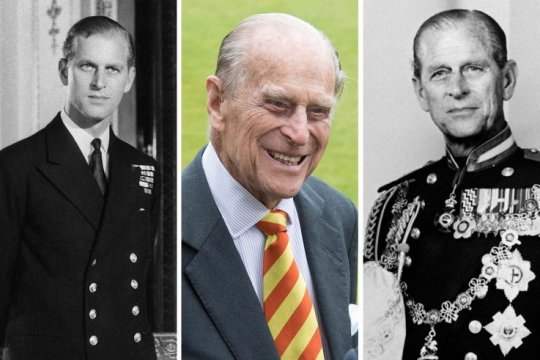
Contrary to what some might think I’m not really a fan girl when it comes to the royal family. I don’t religiously follow their every movement or utterance especially as I live in Paris and therefore I don’t really care about tabloid tittle tattle. I only get to hear of anything to do with the royal family when I speak to my parents or my great aunts and uncles for whom the subject is closer to their heart because of the services my family has rendered over past generations to the monarchy and the older (and dying) tight knit social circles they travel in.
Like Walter Bagehot, I’m more interested in the monarchy as an institution and its constitutional place within the historical, social, and political fabric of Britain and its continued delicate stabilising importance to that effect. It was Walter Bagehot, the great constitutional scholar and editor the Economist magazine, who said, “The mystic reverence, the religious allegiance, which are essential to a true monarchy, are imaginative sentiments that no legislature can manufacture in any people.” In his view, a politically-inactive monarchy served the best interests of the United Kingdom; by abstaining from direct rule, the monarch levitated above the political fray with dignity, and remained a respected personage to whom all subjects could look to as a guiding light.
Even as a staunch monarchist I freely confess that there has always been this odd nature of the relationship between hereditary monarchy and a society increasingly ambivalent about the institution. To paraphrase Bagehot again, there has been too much ‘daylight’ shone onto the ‘magic’ of the monarchy because we are obsessed with personalities as celebrities.
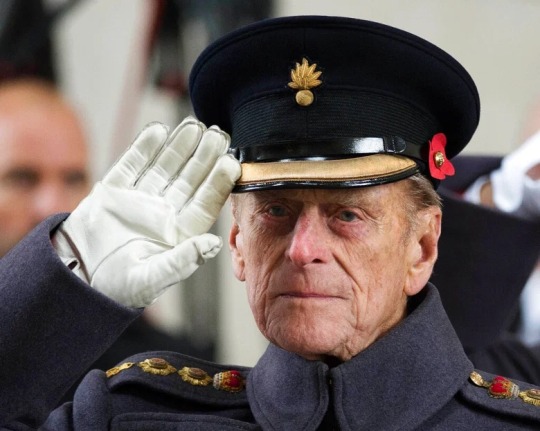
Having said that I did feel saddened by the passing of Prince Philip, the Duke of Edinburgh. After the Queen, he was my favourite royal. Anne, Princess Royal, would come next because she is very much like her father in temperament, humour, and character, so unlike her other brothers.
I have met the late Prince Philip when I was serving in the army in a few regimental meet-and-greet situations - which as you may know is pretty normal given that members of the royal family serve as honorary colonel-in-chiefs (patrons in effect) of all the British army regiments and corps.I also saw him at one or two social events such the annual charitable Royal Caledonian Ball (he’s an expert scottish reeler) and the Guards Polo Club where my older brothers played.
I’ll will freely confess that he was the one royal I could come close to identify with because his personal biography resonated with me a great deal.
Let’s be honest, the core Windsor family members, born to privilege, are conditioned and raised to be dull. Perhaps that’s a a tad harsh. I would prefer the term ‘anonymously self-effacing’, just another way of saying ‘for God’s sake don’t draw attention to yourself by saying or doing anything even mildly scandalous or political lest it invites public opprobrium and scrutiny’. The Queen magnificently succeeds in this but the others from Charles down just haven’t (with the exception of Princess Anne).
However, many people forget this obvious fact that it’s the incoming husbands and wives who marry into the Windsor family who are relied upon to bring colour and even liven things up a little. And long before Kate Middleton, Meghan Markle (very briefly), or Lady Diana Spencer, were the stars of ‘The Firm’- a phrase first coined by King George VI, Queen Elizabeth II's father who ruled from 1936 to 1952, who was thought to have wryly said, "British royals are 'not a family, we're a firm,” - it was Prince Philip who really livened things up and made the greater impact on the monarchy than any of them in the long term.
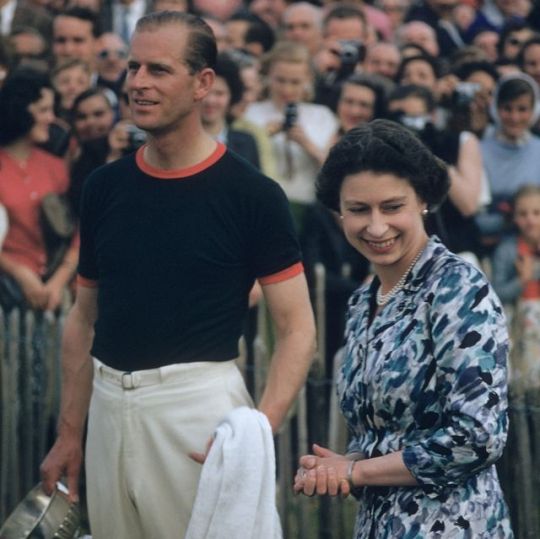
Prince Philip’s passing belied the truth of a far more complex individual: a destitute and penniless refugee Greek-Danish prince with a heart breaking backstory that could have been penned by any 19th Century novelist, and also eagle eyed reformer who tried to drag the royal family into the 20th century. At the core of the man - lost scion of a lost European royal dynasty, a courageous war veteran, and Queen’s consort - were values in which he attempted to transform and yet maintain much older inherited traditions and attitudes. Due to his great longevity, Philip’s life came to span a period of social change that is almost unprecedented, and almost no one in history viewed such a transformation from the front row.
Prince Philip would seem to represent in an acute form the best of the values of that era, which in many ways jar with today’s. He had fought with great courage in the war as a dashing young naval officer; he was regularly rude to foreigners, which was obviously a bonus to all Brits. He liked to ride and sail and shoot things. He was unsentimental almost to a comic degree, which felt reassuring at a time when a new-found emotional incontinence made many feel uncomfortable. Outrageous to some but endearing to others, he was the sort of man you’d want to go for a pint with, perhaps the ultimate compliment that an Englishman can pay to another Englishman. This has its own delicious irony as he wasn’t really an Englishman.
There are 4 takeways I would suggest in my appraisal of Prince Philip that stand out for me. So let me go through each one.
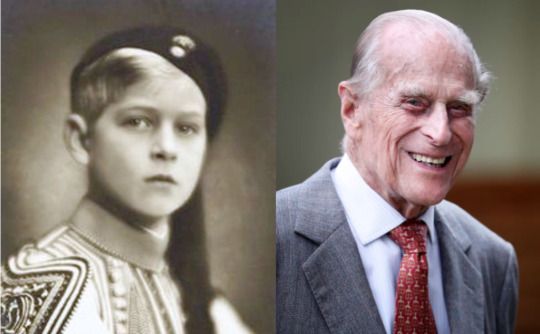
1. Prince Philip’s Internationalism
It may seem odd for me to say that Prince Philip wasn’t English but he wasn’t an Englishman in any real sense. He was a wretch of the world - stateless, homeless, and penniless. That the Prince of Nowhere became the British Monarchy’s figurehead was more than fitting for a great age of migration and transition in which the Royal Family survived and even flourished. That he was able to transform himself into the quintessential Englishman is testimony not just to his personal determination but also to the powerful cultural pull of Britishness.
He was born on a kitchen table in Corfu in June 1921. A year later in 1922, Philip, as the the great-great-grandson of Queen Victoria and nephew of Constantine I of Greece, was forced to flee with his family after the abdication of Constantine. He grew up outside Paris speaking French; ethnically he was mostly German although he considered himself Danish, his family originating from the Schleswig border region. He was in effect, despite his demeanour of Royal Navy officer briskness, a citizen of nowhere in an age of movement. From a very young age he was a stateless person, nationally homeless. Indeed, Philip was an outsider in a way that even Meghan Markle could never be; at his wedding in 1947, his three surviving sisters and two brothers-in-law were not permitted to attend because they were literally Britain’s enemies, having fought for the Germans. A third brother-in-law had even been in the SS, working directly for Himmler, but had been killed in the conflict.
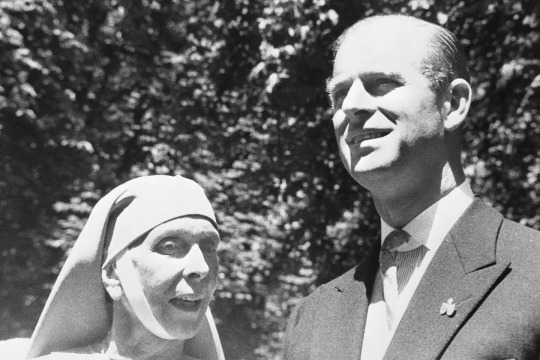
Even his religion was slightly exotic. He was Greek Orthodox until he converted to Anglicanism on marrying Elizabeth - what with his wife due to become supreme head of the Church and everything - but his ties with eastern Christianity remained. His great-aunts Princess Elisabeth of Hesse and by Rhine and Tsarina Alexandra are both martyrs of the Russian Orthodox Church, having been murdered by the Bolsheviks; Philip’s mother went on to become an Orthodox nun and a “Righteous Among the Nations” for saving a Jewish family during the Nazi occupation of Greece, spending much of her time in squalid poverty.
His parents were part of the largely German extended aristocracy who ruled almost all of Europe before it all came crashing down in 1918. When he died, aged 99, it marked a near-century in which all the great ideological struggles had been and gone; he had been born before the Soviet Union but outlived the Cold War, the War on Terror and - almost - Covid-19.
The world that Philip was born into was a far more violent and dangerous place than ours. In the year he was born, Irish rebels were still fighting Black and Tans; over the course of 12 months the Spanish and Japanese prime ministers were assassinated, there was a coup in Portugal and race riots in the United States. Germany was rocked by violence from the far-Left and far-Right, while in Italy a brutal new political movement, the Fascists, secured 30 seats in parliament, led by a trashy journalist called Benito Mussolini.
The worst violence, however, took place in Greece and Turkey. Following the defeat of the Ottoman Empire, what remained of Turkey was marked for permanent enfeeblement by the Allies. But much to everyone’s surprise the country’s force were roused by the brilliant officer Mustafa Kemal, who led the Turks to victory. Constantinople was lost to Christendom for good and thousands of years of Hellenic culture was put to the flames in Smyrna.
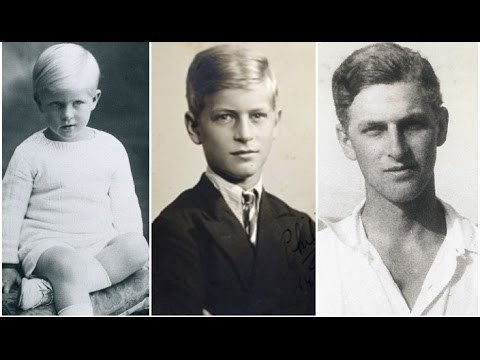
The Greek royal family, north German imports shipped in during the 19th century, bore much of the popular anger for this disaster. King Constantine fled to Italy, and his brother Andrew was arrested and only escaped execution through the intervention of his relative Britain’s George V. Andrew’s wife Alice, their four daughters and infant son Philip fled to France, completely impoverished but with the one possession that ensures that aristocrats are never truly poor: connections.
Philip had a traumatic childhood. He was forged by the turmoil of his first decade and then moulded by his schooling. His early years were spent wandering, as his place of birth ejected him, his family disintegrated and he moved from country to country, none of them ever his own. When he was just a year old, he and his family were scooped up by a British destroyer from his home on the Greek island of Corfu after his father had been condemned to death. They were deposited in Italy. One of Philip's first international journeys was spent crawling around on the floor of the train from an Italian port city, "the grubby child on the desolate train pulling out of the Brindisi night," as his older sister Sophia later described it.
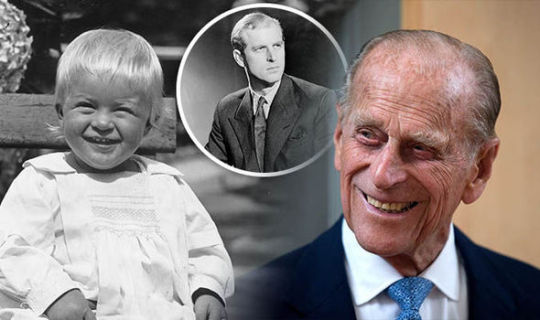
In Paris, he lived in a house borrowed from a relative; but it was not destined to become a home. In just one year, while he was at boarding school in Britain, the mental health of his mother, Princess Alice, deteriorated and she went into an asylum; his father, Prince Andrew, went off to Monte Carlo to live with his mistress. "I don't think anybody thinks I had a father," he once said. Andrew would die during the war. Philip went to Monte Carlo to pick up his father's possessions after the Germans had been driven from France; there was almost nothing left, just a couple of clothes brushes and some cuff-links.
Philip’s four sisters were all much older, and were soon all married to German aristocrats (the youngest would soon die in an aeroplane crash, along with her husband and children). His sisters became ever more embroiled in the German regime. In Scotland going to Gordonstoun boarding school, Philip went the opposite direction, becoming ever more British. Following the death of his sister Cecilie in a plane crash in 1937, the gulf widened. As the clouds of conflict gathered, the family simply disintegrated. With a flash of the flinty stoicism that many would later interpret, with no little justification, as self-reliance to the point of dispassion, the prince explained: “It’s simply what happened. The family broke up… I just had to get on with it. You do. One does.”
In the space of 10 years he had gone from a prince of Greece to a wandering, homeless, and virtually penniless boy with no-one to care for him. He got through it by making a joke of everything, and by being practical.
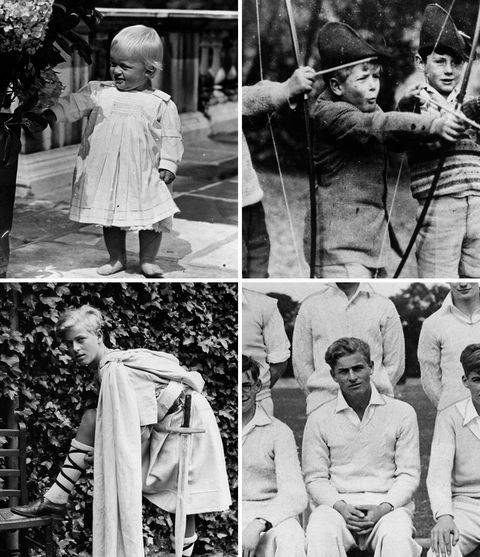
By the time he went to Gordonstoun, a private boarding school on the north coast of Scotland, Philip was tough, independent and able to fend for himself; he'd had to be. Gordonstoun would channel those traits into the school's distinct philosophy of community service, teamwork, responsibility and respect for the individual. And it sparked one of the great passions of Philip's life - his love of the sea. It was Gordonstoun that nurtured that love through the maturation of his character.
Philip adored the school as much as his son Charles would despise it. Not just because the stress it put on physical as well as mental excellence - he was a great sportsman. But because of its ethos, laid down by its founder Kurt Hahn, a Jewish exile from Nazi Germany.
Hahn first met Philip as a boy in Nazi Germany. Through a connection via one of his sister’s husbands, Philip, the poor, lonely boy was first sent off to a new school - in Nazi Germany. Which was as fun as can be imagined. Schloss Salem had been co-founded by stern educator called Kurt Hahn, a tough, discipline-obsessed conservative nationalist who saw civilisation in inexorable decline. But by this stage Hahn, persecuted for being Jewish in Nazi Germany, had fled to Britain, and Philip did not spend long at the school either, where pressure from the authorities was already making things difficult for the teachers. Philip laughed at the Nazis at first, because their salute was the same gesture the boys at his previous school had to make when they wanted to go to the toilet, but within a year he was back in England, a refugee once again.
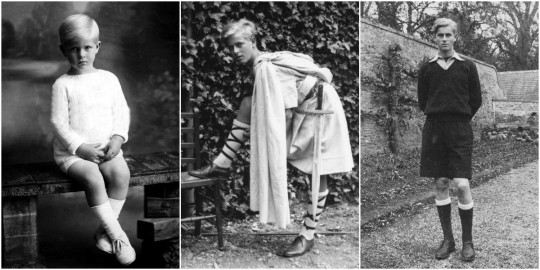
Philip happily attended Hahn’s new school, Gordonstoun, which the strict disciplinarian had set up in the Scottish Highlands. Inspired by Ancient Sparta, the boys (and then later girls) had to run around barefoot and endure cold showers, even in winter, the whole aim of which was to drive away the inevitable civilisational decay Hahn saw all around him. To 21st century ears it sounds like hell on earth, yet Philip enjoyed it, illustrating just what a totally alien world he came from.
That ethos became a significant, perhaps the significant, part of the way that Philip believed life should be lived. It shines through the speeches he gave later in his life. "The essence of freedom," he would say in Ghana in 1958, "is discipline and self-control." The comforts of the post-war era, he told the British Schools Exploring Society a year earlier, may be important "but it is much more important that the human spirit should not be stifled by easy living". And two years before that, he spoke to the boys of Ipswich School of the moral as well as material imperatives of life, with the "importance of the individual" as the "guiding principle of our society".
It was at Gordonstoun one of the great contradictions of Philip's fascinating life was born. The importance of the individual was what in Kurt Hahn's eyes differentiated Britain and liberal democracies from the kind of totalitarian dictatorship that he had fled. Philip put that centrality of the individual, and individual agency - the ability we have as humans to make our own moral and ethical decisions - at the heart of his philosophy.
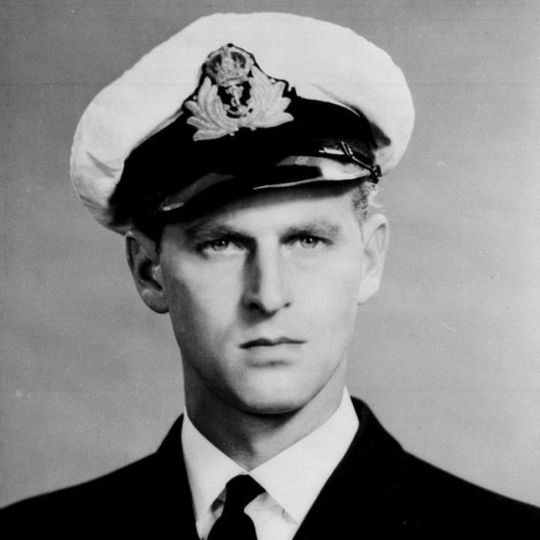
At Dartmouth Naval College in 1939, the two great passions of his life would collide. He had learned to sail at Gordonstoun; he would learn to lead at Dartmouth. And his driving desire to achieve, and to win, would shine through. Despite entering the college far later than most other cadets, he would graduate top of his class in 1940. In further training at Portsmouth, he gained the top grade in four out of five sections of the exam. He became one of the youngest first lieutenants in the Royal Navy.
The navy ran deep in his family. His maternal grandfather had been the First Sea Lord, the commander of the Royal Navy; his uncle, "Dickie" Mountbatten, had command of a destroyer while Philip was in training. In war, he showed not only bravery but guile. It was his natural milieu. "Prince Philip", wrote Gordonstoun headmaster Kurt Hahn admiringly, "will make his mark in any profession where he will have to prove himself in a trial of strength".
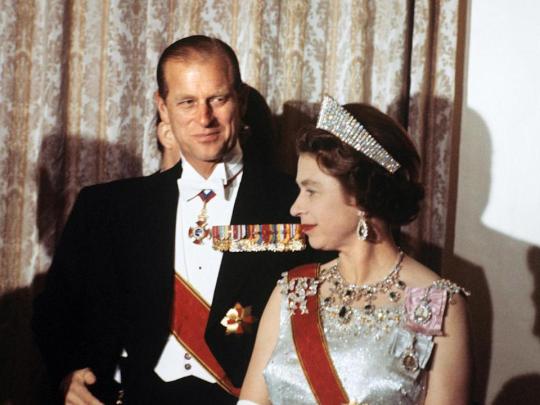
2. Prince Philip and the modernisation of the monarchy
In his own words, the process of defining what it meant to be a royal consort was one of “trial and error.” Speaking with BBC One’s Fiona Bruce in 2011, Philip explained, “There was no precedent. If I asked somebody, 'What do you expect me to do?' they all looked blank. They had no bloody idea, nobody had much idea.” So he forged for himself a role as a moderniser of the monarchy.
He could not have had much idea back in 1939. Back then in Dartmouth in 1939, as war became ever more certain, the navy was his destiny. He had fallen in love with the sea itself. "It is an extraordinary master or mistress," he would say later, "it has such extraordinary moods." But a rival to the sea would come.
When King George VI toured Dartmouth Naval College, accompanied by Philip's uncle, he brought with him his daughter, Princess Elizabeth. Philip was asked to look after her. He showed off to her, vaulting the nets of the tennis court in the grounds of the college. He was confident, outgoing, strikingly handsome, of royal blood if without a throne. She was beautiful, a little sheltered, a little serious, and very smitten by Philip.
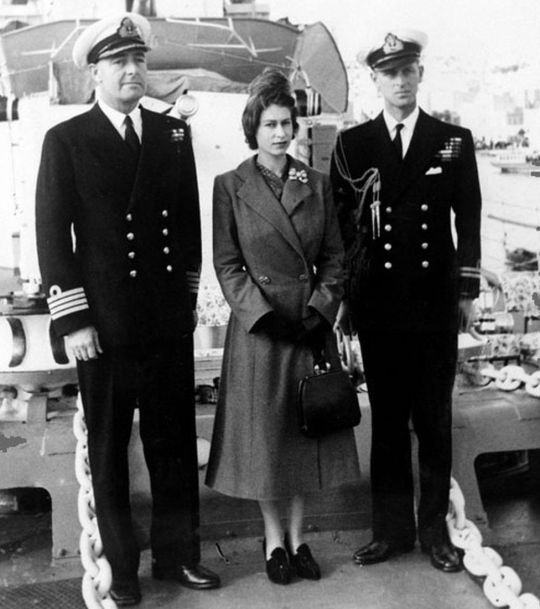
Did he know then that this was a collision of two great passions? That he could not have the sea and the beautiful young woman? For a time after their wedding in 1948, he did have both. As young newlyweds in Malta, he had what he so prized - command of a ship - and they had two idyllic years together. But the illness and then early death of King George VI brought it all to an end.
He knew what it meant, the moment he was told. Up in a lodge in Kenya, touring Africa, with Princess Elizabeth in place of the King, Philip was told first of the monarch's death in February 1952. He looked, said his equerry Mike Parker, "as if a ton of bricks had fallen on him". For some time he sat, slumped in a chair, a newspaper covering his head and chest. His princess had become the Queen. His world had changed irrevocably.
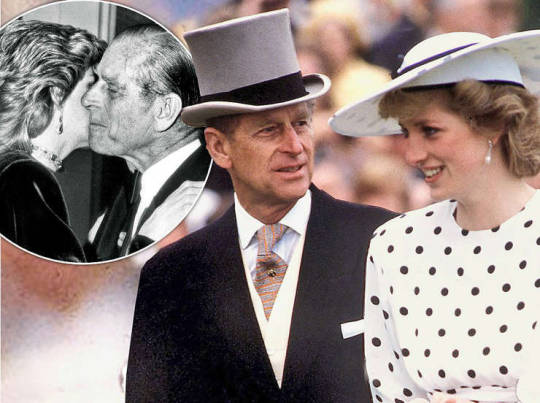
While the late Princess Diana was later to famously claim that there were “three people” in her marriage - herself, Prince Charles and Camilla - there were at least 55 million in Philip and Elizabeth’s. As Elizabeth dedicated her life to her people at Westminster Abbey at the Coronation on June 2, 1953, it sparked something of an existential crisis in Philip. Many people even after his death have never really understood this pivotal moment in Philip’s life. All his dreams of being a naval officer and a life at sea as well as being the primary provider and partner in his marriage were now sacrificed on the altar of duty and love.
With his career was now over, and he was now destined to become the spare part. Philip, very reasonably, asked that his future children and indeed his family be known by his name, Mountbatten. In effect he was asking to change the royal family’s name from the House of Windsor to the House of Mountbatten. But when Prime Minister Winston Churchill got wind of it as well as the more politically agile courtiers behind the Queen, a prolonged battle of wits ensued, and it was one Philip ultimately lost. It was only in 1957 that he accepted the title of “Prince.”
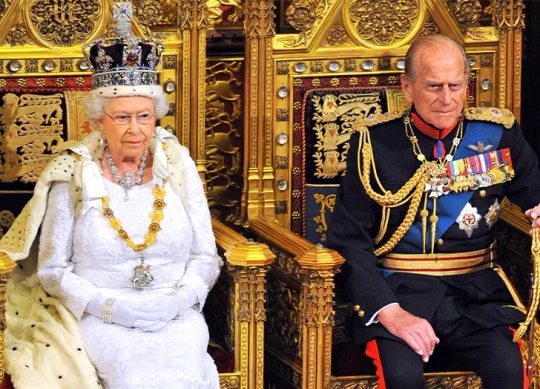
Even though he had almost lost everything dear to him and his role now undefined, he didn’t throw himself a pity party. He just got on with it. Philip tried to forge his own distinct role as second fiddle to the woman who had come to represent Great Britain. He designated himself the First Officer of the Good Ship Windsor. He set about dusting off some of the cobwebs off the throne and letting some daylight unto the workings of the monarchy by advocating reasonable amount of modernisation of the monarchy.
He had ideas about modernising the royal family that might be called “improving optics” today. But in his heart of hearts he didn’t want the monarchy to become a stuffy museum piece. He envisaged a less stuffy and more popular monarchy, relevant to the lives of ordinary people. Progress was always going to be incremental as he had sturdy opposition from the old guard who wanted to keep everything as it was, but nevertheless his stubborn energy resulted in significant changes.
When a commission chaired by Prince Philip proposed broadcasting the 1953 investiture ceremony that formally named Elizabeth II as queen on live television, Prime Minister Winston Churchill reacted with outright horror, declaring, “It would be unfitting that the whole ceremony should be presented as if it were a theatrical performance.” Though the queen had initially voiced similar concerns, she eventually came around to the idea, allowing the broadcast of all but one segment of the coronation. Ultimately, according to the BBC, more than 20 million people tuned in to the televised ceremony - a credit to the foresight of Philip.
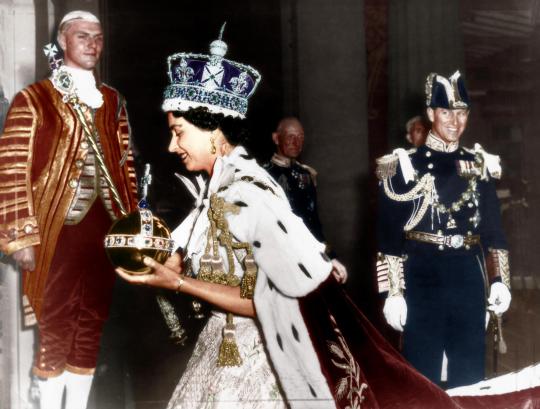
Elizabeth’s coronation marked a watershed moment for a monarchy that has, historically, been very hands off, old-fashioned and slightly invisible. Over the following years, the royals continued to embrace television as a way of connecting with the British people: In 1957, the queen delivered her annual Christmas address during a live broadcast. Again, this was Philip’s doing when he cajoled the Queen to televise her message live. He even helped her in how to use the teleprompter to get over her nerves and be herself on screen.
Four years later, in 1961, Philip became the first family member to sit for a television interview. It is hard for us to imagine now but back then it was huge. For many it was a significant step in modernising the monarchy.
Though not everything went to plan. Toward the end of the decade, the Windsors even invited cameras into their home. A 1969 BBC fly-on-the-wall documentary, instigated by Philip to show life behind the scenes, turned into an unmitigated disaster: “The Windsors” revealed the royals to be a fairly normal, if very rich, British upper-class family who liked barbecues, ice cream, watching television and bickering. The mystery of royalty took a hit below the waterline from their own torpedo, a self-inflicted wound from which they took a long time to recover. Shown once, the documentary was never aired again. But it had an irreversible effect, and not just by revealing the royals to be ordinary. By allowing the cameras in, Philip opened the lid to the prying eyes of the paparazzi who could legitimately argue that since the Royals themselves had sanctioned exposure, anything went. From then on, minor members of the House of Windsor were picked off by the press, like helpless tethered animals on a hunting safari.
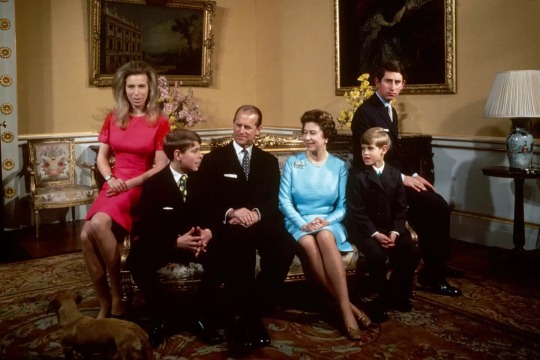
Prince Philip also took steps to reorganise and renovate the royal estates in Sandringham and Balmoral such as intercoms, modern dish washers, generally sought to make the royal household and the monarchy less stuffy, not to have so much formality everywhere.
Philip helped modernised the monarchy in other ways to acknowledge that the monarchy could be responsive to changes in society. It was Prince Philip - much to the chagrin of the haughty Princess Margaret and other stuffy old courtiers - who persuaded the Queen to host informal lunches and garden parties designed to engage a broader swath of the British public. Conversely, Prince Philip heartily encouraged the Queen (she was all for it apparently but was still finding her feet as a new monarch) to end the traditional practice of presenting debutantes from aristocratic backgrounds at court in 1952. For Philip and others it felt antiquated and out of touch with society. I know in speaking to my grandmother and others in her generation the decision was received with disbelief at how this foreign penniless upstart could come and stomp on the dreams of mothers left to clutch their pearls at the prospect there would be no shop window for their daughter to attract a suitable gentleman for marriage. One of my great aunts was over the moon happy that she never would have to go through what she saw as a very silly ceremony because she preferred her muddy wellies to high heels.
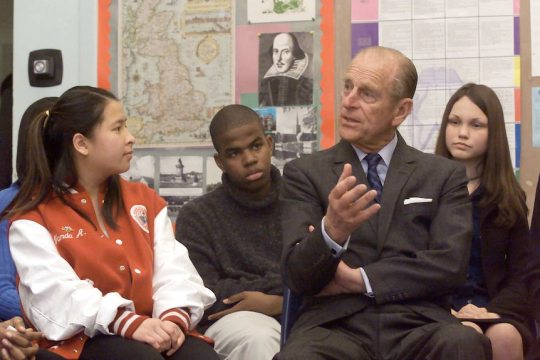
A former senior member of the royal household, who spent several years working as one of Prince Philip’s aides, and an old family friend, once told us around a family dinner table that the Duke of Edinburgh was undoubtedly given a sense of permanence by his marriage into the Royal Family that was missing from earlier years. But the royal aide would hastily add that Prince Philip, of course, would never see it that way.
Prince Philip’s attitude was to never brood on things or seek excuses. And he did indeed get on with the job in his own way - there should be no doubt that when it came to building and strengthening the Royal Family it was a partnership of equals with the Queen. Indeed contrary to Netflix’s hugely popular series ‘The Crown’ and its depiction of the royal marriage with Philip’s resentment at playing second fiddle, the prince recognised that his “first duty was to serve the Queen in the best way I could,” as he told ITV in 2011. Though this role was somewhat ill-suited to his dynamic, driven, and outspoken temperament, Philip performed it with utter devotion.
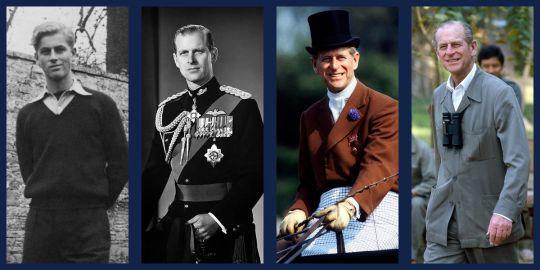
3. Prince Philip’s legacy
One could argue rightly that modernising the monarchy was his lasting legacy achievement. But he also tried to modernise a spent and exhausted Britain as it emerged from a ruinous war. When peace came, and with it eventual economic recovery, Philip would throw himself into the construction of a better Britain, urging the country to adopt scientific methods, embracing the ideas of industrial design, planning, education and training. A decade before Harold Wilson talked of the "white heat of the technological revolution", Philip was urging modernity on the nation in speeches and interviews. He was on top of his reading of the latest scientific breakthroughs and well read in break out innovations.
This interest in modernisation was only matched by his love for nature. As the country and the world became richer and consumed ever more, Philip warned of the impact on the environment, well before it was even vaguely fashionable. As president of the World Wildlife Fund (WWF) in the UK for more than 20 years from 1961, he was one of the first high-profile advocates of the cause of conservation and biological diversity at a time when it was considered the preserve of an eccentric few.
For a generation of school children in Britain and the Commonwealth though, his most lasting legacy and achievement will be the Duke of Edinburgh Awards (DofE). He set up the Duke of Edinburgh award, a scheme aimed at getting young people out into nature in search of adventure or be of service to their communities. It was a scheme that could match the legacy of Baden Powell’s scouts movement.
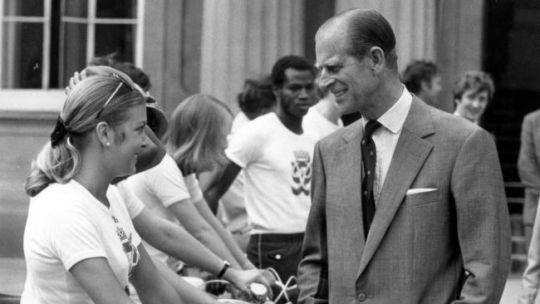
When Prince Philip first outlined his idea of a scheme to harness the values of his education at Gordonstoun by bringing character-building outdoor pursuits to the many rather than the fee-paying few, he received short shrift from the government of the day. The then minister of education, Sir David Eccles responded to the Duke’s proposal by saying: “I hear you’re trying to invent something like the Hitler Youth.” Undeterred he pushed on until it came to fruition.
I’m so glad that he did. I remember how proud I was for getting my DofE Awards while I was at boarding school. With the support of great mentors I managed to achieve my goals: collecting second-hand English books for a literacy programme for orphaned street children in Delhi, India with a close Indian school friend and her family; and completing a 350 mile hike following St. Olav’s Pilgrimmage Trail from Selånger, on the east coast of Sweden, and ending at Nidaros Cathedral in Trondheim, on the west coast of Norway.
It continues to be an enduring legacy. Since its launch in 1956, the Duke of Edinburgh awards have been bestowed upon some 2.5 million youngsters in Britain and some eight million worldwide. For a man who once referred to himself as a “Greek princeling of no consequence”, his pioneering tutelage of these two organisations (alongside some 778 other organisations of which he was either president or a patron) would be sufficient legacy for most.
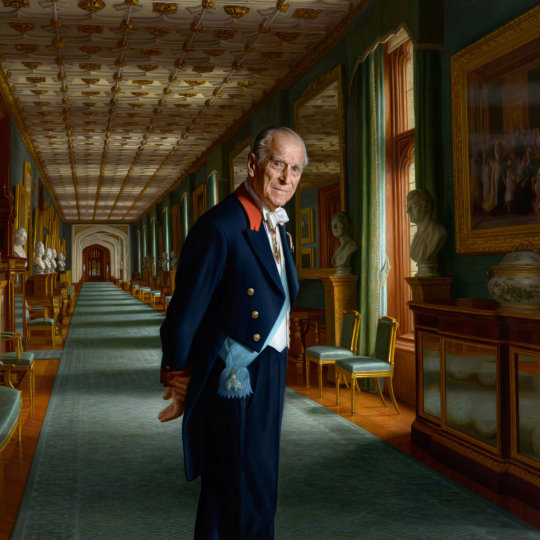
4. Prince Philip’s character
It may surprise some but what I liked most about Prince Philip was the very thing that helped him achieve so much and leave a lasting legacy: his character.
It is unhelpful to the caricature of Prince Philip as an unwavering but pugnacious consort whose chief talent was a dizzying facility in off-colour one-liners that he was widely read and probably the cleverest member of his family.
His private library at Windsor consists of 11,000 tomes, among them 200 volumes of poetry. He was a fan of Jung, TS Eliot, Shakespeare and the cookery writer Elizabeth David. As well as a lifelong fascination with science, technology and sport, he spoke fairly fluent French, painted and wrote a well received book on birds. It’s maddening to think how many underestimated his genuine intellect and how cultured he was behind the crusty exterior.
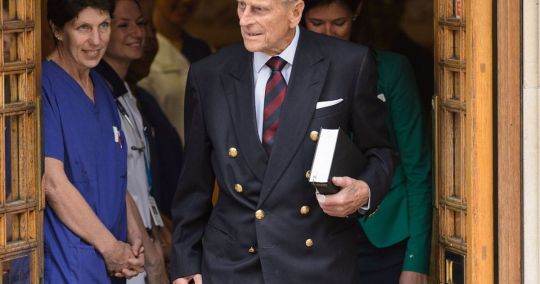
He didn’t have an entourage to fawn around him. He was the first to own a computer at Buckingham Palace. He answered his own phone and wrote and responded to his own correspondence. By force of character he fought the old guard courtiers at every turn to modernise the monarchy against their stubborn resistance.
Prince Philip was never given to self-analysis or reflection on the past. Various television interviewers tried without success to coerce him in to commenting on his legacy.But once when his guard was down he asked on the occasion of his 90th birthday what he was more proud of, he replied with characteristic bluntness: “I couldn’t care less. Who cares what I think about it, I mean it’s ridiculous.”
All of which neatly raises the profound aversion to fuss and the proclivity for tetchiness often expressed in withering put-downs that, for better or worse, will be the reflex memory for many of the Duke of Edinburgh. If character is a two edged sword so what of his gaffes?
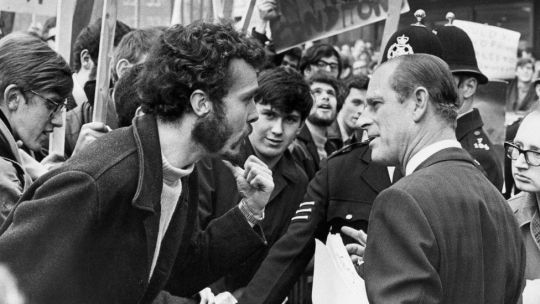
There is no doubt his cult status partly owed to his so-called legendary gaffes, of which there are enough to fill a book (indeed there is a book). But he was no racist. None of the Commonwealth people or foreign heads of state ever said this about him. Only leftist republicans with too much Twitter time on their hands screamed such a ridiculous accusation. They’re just overly sensitive snowflakes and being devoid of any humour they’re easily triggered.
There was the time that Philip accepted a gift from a local in Kenya, telling her she was a kind woman, and then adding: “You are a woman, aren’t you?” Or the occasion he remarked “You managed not to get eaten, then?” to a student trekking in Papua New Guinea. Then there was his World Wildlife Fund speech in 1986, when he said: “If it has got four legs and it is not a chair, if it has got two wings and it flies but is not an aeroplane, and if it swims and it is not a submarine, the Cantonese will eat it.” Well, he wasn’t wrong.
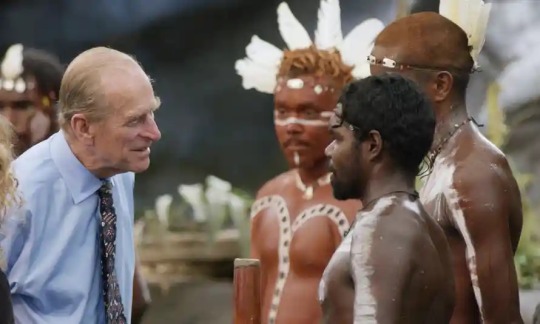
Philip quickly developed a reputation for what he once defined, to the General Dental Council, as “dentopedology – the science of opening your mouth and putting your foot in it”. Clearly he could laugh at himself as he often did as an ice breaker to put others at ease.
His remarking to the president of Nigeria, who was wearing national dress, “You look like you’re ready for bed”, or advising British students in China not to stay too long or they would end up with “slitty eyes”, is probably best written off as ill-judged humour. Telling a photographer to “just take the fucking picture” or declaring “this thing open, whatever it is”, were expressions of exasperation or weariness with which anyone might sympathise.
Above all, he was also capable of genuine if earthy wit, saying of his horse-loving daughter Princess Anne: “If it doesn’t fart or eat hay she isn’t interested.” Many people might have thought it but few dared say it. If Prince Philip’s famous gaffes provoked as much amusement as anger, it was precisely because they seem to give voice to the bewilderment and pent-up frustrations with which many people viewed the ever-changing modern world.
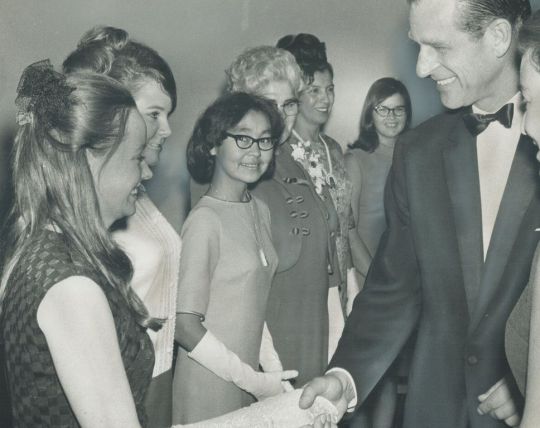
A former royal protection officer recounts how while on night duty guarding a visiting Queen and consort, he engaged in conversation with colleagues on a passing patrol. It was 2am and the officer had understood the royal couple to be staying elsewhere in the building until a window above his head was abruptly slammed open and an irate Prince Philip stuck his head out of the window to shout: “Would you fuck off!” Without another word, he then shut the window.
The Duke at least recognised from an early age that he was possessed of an abruptness that could all too easily cross the line from the refreshingly salty to crass effrontery.
One of his most perceptive biographers, Philip Eade, recounted how at the age of 21 the prince wrote a letter to a relation whose son had recently been killed in combat. He wrote: “I know you will never think much of me. I am rude and unmannerly and I say things out of turn which I realise afterwards must have hurt someone. Then I am filled with remorse and I try to put matters right.”
In the case of the royal protection officer, the Duke turned up in the room used by the police officers when off duty and said: “Terribly sorry about last night, wasn’t quite feeling myself.”
Aides have also ventured to explain away some of their employer’s more outlandish remarks - from asking Cayman islanders “You are descended from pirates aren’t you?” to enquiring of a female fashion writer if she was wearing mink knickers - as the price of his instinctive desire to prick the pomposity of his presence with a quip to put others at ease.
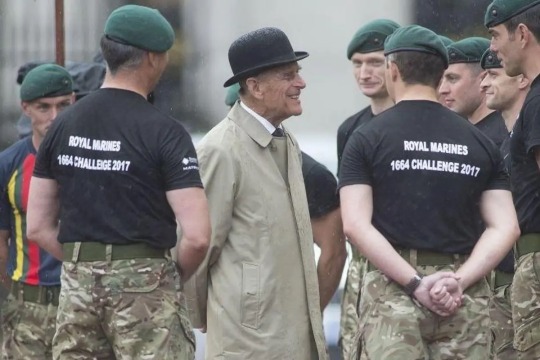
Indeed many people forget that his ‘gaffes’ were more typical of the clubbish humour of the British officer class – which of course would be less appreciated, sometimes even offensive, to other ears. It’s why he could relate so well to veterans who enjoyed his bonhomie company immensely.
But behind the irascibility, some have argued there also lay a darker nature, unpleasantly distilled in his flinty attitude to his eldest son. One anecdote tells of how, in the aftermath of the murder of the Duke’s uncle and surrogate father, Lord Mountbatten, Philip lectured his son, who was also extremely fond of his “honorary grandfather”, that he was not to succumb to self-pity. Charles left the room in tears and when his father was asked why he had spoken to his son with so little compassion, the Duke replied: “Because if there’s any crying to be done I want it to happen within this house, in front of his family, not in public. He must be toughened up, right now.”
But here I would say that Prince Philip’s intentions were almost always sincere and in no way cruel. He has always tried to protect his family - even from their own worst selves or from those outside the family ‘firm’ who may not have their best interest at heart.
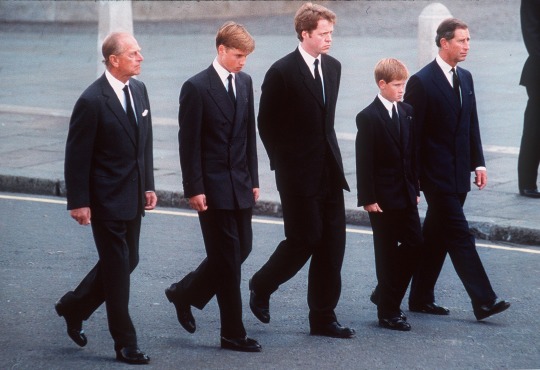
In 1937, a 16-year-old Prince Philip had walked behind his elder sister Cecile’s coffin after she was killed in a plane crash while heavily pregnant. The remains of newly-born infant found in the wreckage suggested the aircraft had perished as the pilot sought to make an emergency landing in fog as the mother entered childbirth. It was an excruciating taste of tragedy which would one day manifest itself in a very princely form of kindness that was deep down that defined Philip’s character.
When about 60 years later Prime Minister Tony Blair’s spin doctors in Downing Street tried to strong arm the Queen and the royal household over the the arrangements for the late Prince Diana’s funeral, it was Philip who stepped in front to protect his family. The Prime Minister and his media savvy spin doctors wanted the two young princes, William and Harry, to walk behind the coffin.
The infamous exchange was on the phone during a conference call between London and Balmoral, and the emotional Philip was reportedly backed by the Queen. The call was witnessed by Anji Hunter, who worked for Mr Blair. She said how surprised she was to hear Prince Philip’s emotion. ‘It’s about the boys,” he cried, “They’ve lost their mother”. Hunter thought to herself, “My God, there’s a bit of suffering going on up there”.’
Sky TV political commentator Adam Boulton (Anji Hunter’s husband) would write in his book Tony’s Ten Years: ‘The Queen relished the moment when Philip bellowed over the speakerphone from Balmoral, “Fuck off. We are talking about two boys who have just lost their mother”. Boulton goes on to say that Philip: ‘…was trying to remind everyone that human feelings were involved. No 10 were trying to help the Royals present things in the best way, but may have seemed insensitive.’

In the end the politicians almost didn’t get their way. Prince Philip stepped in to counsel his grandson, Prince William, after he had expressed a reluctance to follow his mother’s coffin after her death in Paris. Philip told the grieving child: “If you don’t walk, I think you’ll regret it later. If I walk, will you walk with me?”
It’s no wonder he was sought as a counsellor by other senior royals and especially close to his grandchildren, for whom he was a firm favourite. His relationship with Harry was said to have become strained, however, following the younger Prince’s decision to reject his royal inheritance for a life away from the public eye in America with his new American wife, Meghan Markle. For Prince Philip I am quite sure it went against all the elder Prince had lived his life by - self-sacrifice for the greater cause of royalty.
This is the key to Philip’s character and in understanding the man. The ingrained habits of a lifetime of duty and service in one form or another were never far away.
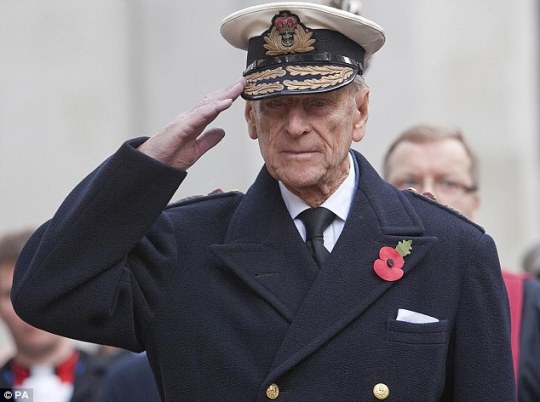
In conclusion then....
After more time passes I am sure historians will make a richer reassessment of Prince Philip’s life and legacy. Because Prince Philip was an extraordinary man who lived an extraordinary life; a life intimately connected with the sweeping changes of our turbulent 20th Century, a life of fascinating contrast and contradiction, of service and some degree of solitude. A complex, clever, eternally restless man that not even the suffocating protocols of royalty and tradition could bind him.
Although he fully accepted the limitations of public royal service, he did not see this as any reason for passive self-abnegation, but actively, if ironically, identified with his potentially undignified role. It is this bold and humorous embrace of fated restriction which many now find irksome: one is no longer supposed to mix public performance with private self-expression in quite this manner.
Yet such a mix is authentically Socratic: the proof that the doing of one’s duty can also be the way of self-fulfilment. The Duke’s sacrifice of career to romance and ceremonial office is all the more impressive for his not hiding some annoyance. The combination of his restless temperament and his deeply felt devotion to duty found fruitful expression; for instance, in the work of Saint George’s House Windsor - a centre and retreat that he created with Revd. Robin Woods - in exploring religious faith, philosophy, and contemporary issues.
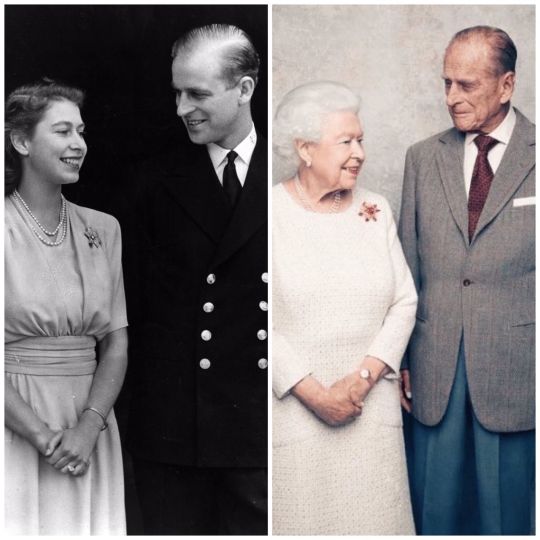
Above all he developed a way to be male that was both traditional and modern. He served one woman with chivalric devotion as his main task in life while fulfilling his public engagements in a bold and active spirit. He eventually embraced the opportunity to read and contemplate more. And yet, he remained loyal to the imperatives of his mentor Kurt Hahn in seeking to combine imagination with action and religious devotion with practical involvement.
Prince Philip took more pride in the roles he had accidentally inherited than in the personal gifts which he was never able fully to develop. He put companionship before self-realisation and acceptance of a sacred symbolic destiny before the mere influencing of events. In all these respects he implicitly rebuked our prevailing meritocracy which over-values officially accredited attainment, and our prevailing narcissism which valorises the assertion of discrete identities.
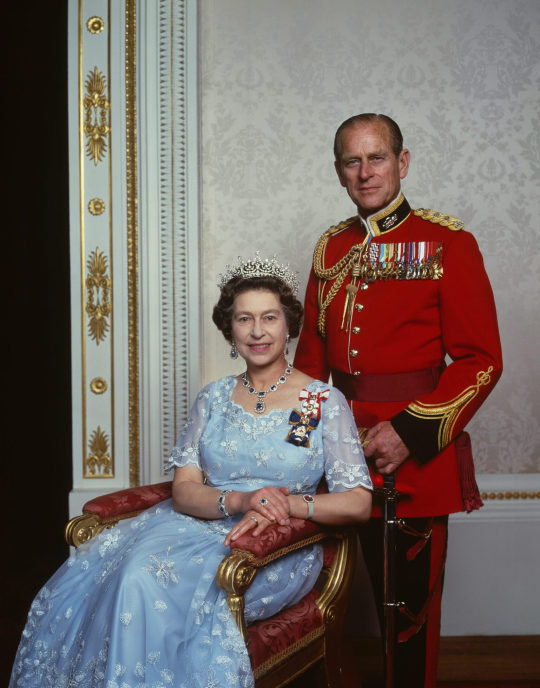
Prince Philip was Britain’s longest-serving consort. He was steadfast, duty driven, and a necessary adjunct to the continuity and stability of the Queen and the monarchy. Of all the institutions that have lost the faith of the British public in this period - the Church, Parliament, the media, the police - the Monarchy itself has surprisingly done better than most at surviving, curiously well-adapted to a period of societal change and moral anarchy. The House of Hanover and later Saxe-Coburg and Gotha (changed to Windsor), since their arrival in this country in 1714, have been noted above all for their ability to adapt. And just as they survived the Victorian age by transforming themselves into the bourgeoise, domestic ideal, so they have survived the new Elizabethan era (Harry-Meghan saga is just a passing blip like the Edward-Wallis Simpson saga of the 1930s).
There was once a time when the Royal’s German blood was a punchline for crude and xenophobic satirists. Now it is the royals who are deeply British while the country itself is increasingly cosmopolitan and globalised. British society has seen a greater demographic change than the preceding four or five thousand years combined, the second Elizabethan age has been characterised more than anything by a transformational movement of people. Prince Philip, the Greek-born, Danish-German persecuted and destitute wanderer who came to become one of the Greatest Britons of the past century, perhaps epitomised that era better than anyone else. And he got through it by making a joke of everything, and by being practical.
I hope I don’t exaggerate when I say that in our troubled times over identity, and our place and purpose in the world, we need to heed his selfless example more than ever.
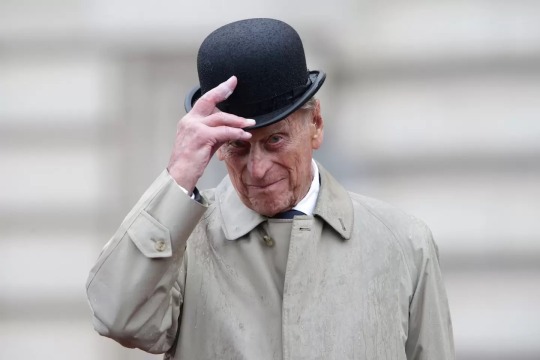
As Heraclitus wisely said, Ήθος ανθρώπω δαίμων (Character is destiny.)
RIP Prince Philip. You were my prince. God damn you, I miss you already.
Thanks for your question.
#question#ask#prince philip#duke of edinburgh#queen elizabeth II#the queen of spades#monarchy#britain#british#royalty#politics#history#culture#europe#crown#icon#great briton#society
284 notes
·
View notes
Text
Hi lovelies,
Okay, so the fact that it is 2023 is giving me so much ick. I don’t like it. However, the concept of the month of ‘January’, as many things do, finds itself rooted in classical inspiration. And so today I thought it would be cool to talk about the Roman god Janus, the reason we call January ‘January’.
Janus was an ancient Roman god, composed of two faces and is often associated with doorways, new beginnings and transitions, and was also considered the guardian of peace at a time when the door to his shrine was closed. His two faces sit facing in opposing directions, one facing forwards and the other facing backwards so that he is able to look into the past and well as the future at the same time, embodying a binary. The idea of January, as it marks the end of a year and the start of a new one, is based heavily off of aspects of Janus.
Janus was known as the initiator of life, transformations between stages of life, and shifts from one historical era to another. Ancient Romans believed that Janus ruled over important events in life such as weddings, births, and deaths, as well as seasonal changes like harvest and the new year. According to Roman mythology, Janus was present from the start of the world. As the god of doors and gates, Janus guarded the fates of heaven and held access to the other gods. For this reason, he was often invoked first in ancient Roman religious ceremonies and during public sacrifices. There is also evidence to suggest that Janus was worshipped long before many of the other Roman gods, dating all the way back to the time of Romulus.
Quick fun fact! Whilst most Roman deities have a Greek equivalent, there is no god that serves as a counterpart to Janus. The Greeks did have a similar character (a two-faced dog by the name of Orthus) but he lacked the same significance in Ancient Greece as Janus did in Ancient Rome.
Plutarch on Janus:
“For this Janus, in remote antiquity, whether he was a demi-god or a king, was a patron of civil and social order, and is said to have lifted human life out of its bestial and savage state. For this reason, he is represented with two faces, implying that he brought men's lives out of one sort and condition into another.”
Ovid dubs Janus as ‘two-headed Janus, am opener of the softly gliding year.’ Janus was a good that went by many different names and had many different jobs, a unique individual that the Romans- even in their own time- regarded as fascinating. Ovoid says, “But what god am I to say thou art, Janus of double-shape? for Greece hath no divinity like thee. The reason, too, unfolds why alone of all the heavenly one thou doest see both back and front.”
The most famous temple to Janus in Rome was called the ‘Ianus Geminus’ (translation- ‘Twin Janus’.). It was symbolic in that when its doors were open, surrounding cities knew that Rome was at war. When the two doors were closed, Rome was at peace. In an account of his accomplishments, Augustus says the gateway doors were closed only twice before him- indicative of the years of civil war that preceded him- by Numa in 325 BC, and Manlius in 30 BC. However, Plutarch says that during the reign of Numa it was not seen open for a single day, but remained shut for 43 years so that there was a universal cessation of war. Augustus himself closed the door three times, in 29 BC after the Battle of Actium, in 25 BC, and the third time was heavily debated. In 260, another temple was built for Janus in the Forum to commemorate a naval victory against the Punic forces.
In art, Janus is usually shown with two-faced, one looking forward and one looking back. In some depictions, the face looking backwards un-bearded, to represent the past, old age, and wisdom, whilst the face looking forward is un bearded to represent youth.
I hope this new year brings wonderful things for all of you and I hope that you enjoy the rest of your weekend! Lots of love xx
~Z
#classical studies#classics#greek mythology#ancient rome#ancient greece#dark acamedia#roman mythology#hellenic deities#ancient world#history#happy new year#january
6 notes
·
View notes
Text
The Shared Dalek Universe of the 1960s: A Case Study
In 2011 (a little over ten years ago!), El Sandifer cited my dearly-beloved 1960s Who Annuals as examples of stories which ended up influencing the TV series many years down the line despite making an unrepentant hash of continuity.
Her first example is that the Doctor is called Dr. Who, and that he alternates between being from Earth on one page, and not being from Earth three pages later. I would point out that TV was doing much the same thing in those days, and went on flip-flopping basically until Jon Pertwee, so it’s not a terribly good argument to begin with.
However, she spends more time pondering the Daleks of the comics. These Daleks, she notes, are very different from those on television at the time. There are hordes of them, they travel in fleets of saucers, and they’re ruled by the Emperor. This contradiction, she argues, later fed back into the TV series in the RTD era, when huge fleets of Daleks became the norm and, earlier but still well after the first burst of Annuals, in the form of Patrick Troughton facing a very different Dalek Emperor in The Evil of the Daleks.
In no way do I wish to undermine Sandifer’s ultimate conclusion that “canon” in the sense of diegetic consistency is a red herring of little importance, and what matters for any sane definition of ‘canon’ is whether a story is referenced at all, not whether it’s contradicted.
However.
Having gone back to 1966′s The Dalek Outer Space Book, I have made a very startling discovery, in the story entitled The Secret of the Emperor. The rest is after the cut; I will leave you with a delightful panel from this story, showing the “bewildered” Dalek Emperor being bullied by knights at the Battle of Agincourt. (This is one of my favourite Doctor Who images ever, and if it doesn’t put a smile on your face I am not sure I want to take you seriously.)
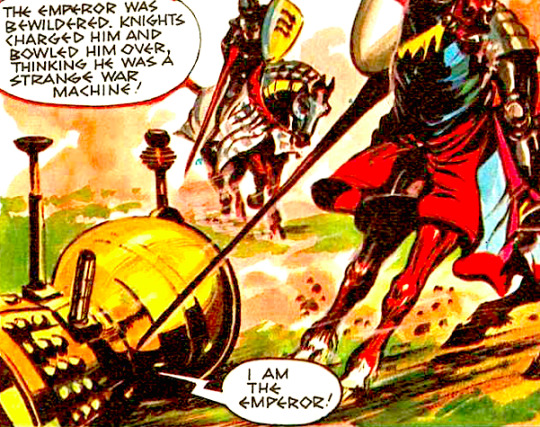
So, famously, when he debuted in the comics, the Dalek Emperor was not the giant, static Dalek later shown on television in The Evil of the Daleks and The Bad Wolf of the Ways; instead, he was golden, squat, and had a bulbous head; to house all the ego, one expects.
Thus, most people will point at the fact that when the Doctor met “the Emperor” in The Evil of the Daleks, he resided in a huge tower-like casing in the Dalek City, as evidence that although ideas received a first treatment in the comics which later made it to screens, no direct continuity was intended; the comics’ Emperor was an alternate, a first draft, to be discarded once a more definitive TV portrayal emerged.
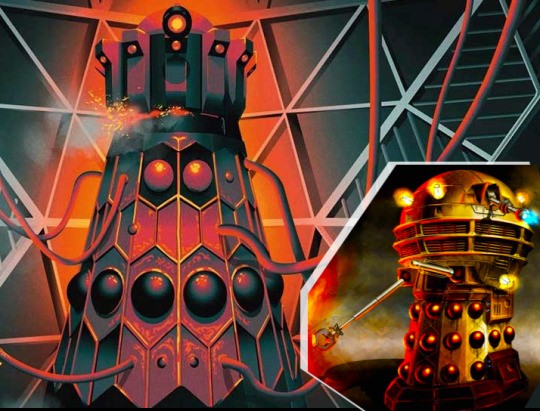
And yet, of course, it is somehow appealing to think of the two as the same Dalek, isn’t it? John Peel (Dalek writer voted most likely to be a 19th century Victorian man who stumbled into a time eddy; it’s mostly the remarkable sideburns) spent a lot of time in his Dalek novels establishing the life story of the Dalek Prime, the First Dalek Ever, who transitioned from the globe-headed casing to the towery Evil one and then deeply regretted it, what with the “getting killed by his own infighting troops with no way to escape”.
But this is usually viewed as a retcon. A cute retcon, an admirable retcon even, but a retcon. My good friend and esteemed fellow canon-welder, @rassilon-imprimatur, espoused such a view four years ago:
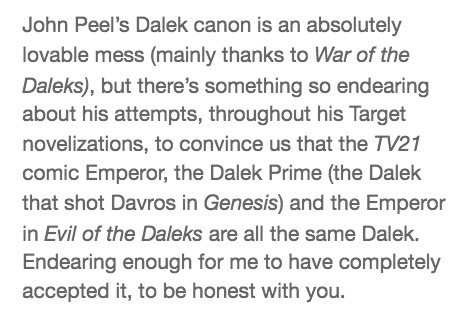
Well, all of this is, if you’ll pardon my French, bollocks. John Peel didn’t make anything up, except for the snappy name of “the Dalek Prime” as a designation for the individual. The Dalek Emperor in Evil of the Daleks was always the Emperor of the 1960s comics, and there is a very good reason for his seemingly-contradictory change of appearance. What’s more, I am not talking about murky authorial intent: these are things that the discerning Dalek fan in 1967 was meant to have known.
Let me wind back the clock to 1966. A Dalek master-plan is unfurling, a multi-media agenda spanning several years, more ambitious perhaps than even Time Lord Victorious in its scope; for the ultimate aim of a small cabal of men including David Whitaker, Terry Nation and Brad Ashton is nothing less than spinning the Daleks out of Doctor Who and into their own non-BBC TV show — to be made in America, and in colour, if you please!
For over a year now, a Dalek story arc has been running in the pages of TV Century 21, tracking the early rise of the Dalek Empire and its early interactions with 2060s humanity. Though the Daleks encroach over other parts of the book, including the headline stories, the bulk of this story arc comes in the form of weekly one-page comics making up one long serialised history of the Daleks, under the minimalist title of The Daleks.

Also under the solo brand of “The Daleks”: Annuals, an exclusive audio story, and, of course, toys. Time for Phase Two. It is time to end the Daleks’ endless confrontations with Dr Who on television, and set the stage for a new status quo able to support the TV series Nation dreams about.
Important background: Terry Nation, famously, does not like the Dalek Emperor. Whitaker made him up without consulting Nation, who maintains that the highest rank in the Dalek hierarchy should be the Dalek Supreme. The Emperor was hard to do away with in the comics, since he was basically the protagonist of the TV21 strip, but one imagines Nation was keen to jettison him from the world of the planned TV series.
I am speculating, of course, but I picture Nation sitting in his office, pondering the two great thorns in the side of the Independant Daleks Masterplan.
Thorn one: the Daleks are entangled with the Doctor both diegetically and symbolically; unless something can be done, the Daleks will remain “the Doctor’s enemies”, and a show where they commit evil and the Doctor fails to show up would ring false with the kids watching. The Daleks must be removed from Doctor Who in a sensational and definitive manner, or the whole enterprise is a nonstarter.
Thorn two: I, Terry Nation, have foolishly allowed David Whitaker to shape the lore of the Daleks, and he has made this Dalek Emperor guy very central to early Dalek history, leading up to the 22nd century Dalek Invasion of Earth that most of the Doctor’s subsequent conflicts with the Daleks have stemmed from. But I do not like the Dalek Emperor. I wish I could get rid of him in my new status quo.
…………Aha.
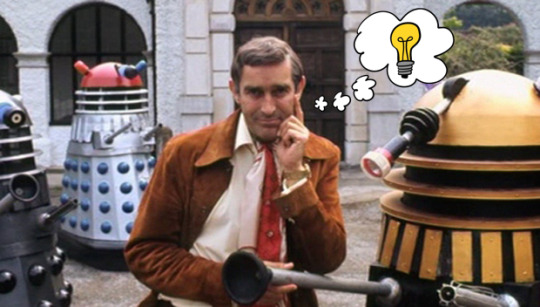
A triumphant Terry Nation adds a post-it note to the ever-widening corkboard representing the multimedia Dalek Masterplan setting up the TV series, which must already include things like “convince Jean Marsh to come back as Sara Kingdom”. Notes distilled from this corkboard will form the backbone of The Dalek Outer Space Book, this year’s Dalek annual, which exists principally to set up the prospective main characters of the new TV series: Sara Kingdom and Agent Mark Seven, of the Space Security Service.
The new post-it note reads:
Construe the Daleks’ enmity with the Doctor as a personal enmity between the Doctor and the Emperor, a la Sherlock Holmes and Moriarty. Have the Doctor triumph over the Emperor on TV in a big ‘event’ story.
Result: the Doctor-vs-Daleks storyline is over; the Emperor is dead; I get everything I ever wanted.
(Except maybe a pony.)
Then he phones David Whitaker, smirking all the while like an evil genie preparing to grant a badly-worded wish.
“Good news, old chap, I’ve decided you can write a new Dalek story for the BBC, all by yourself. I promise I won’t interfere.”
*confused and delighted David Whitaker noises*
“ And you can even bring in that Dalek Emperor of yours. Yes, you heard me!”
*Whitaker enthusiasm intensifies*
“Ahhh, but there’s a catch. The Dalek Emperor must DIE.”
Of course, like all good Faustian bargains, this is irresistible even though it is ruinous and the victim knows it to be ruinous. Whitaker agrees to the scheme. He and Nation begin planning out the events of the great finale of the Dalek-Doctor confrontation, which will hit the screens in 1967 as the mildly racist, but otherwise quite well-loved, ‘The Evil of the Daleks’.
Quickly enough, it is decided that Patrick Troughton crouching to berate the short and bubble-headed Golden Emperor would look silly. If the Emperor appears on TV, alongside human performers, then it should tower over them. Besides, this is to be the archvillainous Dalek Emperor’s last stand, and certain traditions must be followed.
Hence another task is added to the bucketlist of the Dalek Outer Space Book: tell the story of how the Emperor transformed from the globe-headed dwarf to some huge and terrible towering form under the Dalek City, for the Doctor to stumble onto later. This rebuilt Emperor may be teased, but must not be truly seen or truly defeated in the book; that would defeat the whole idea.
Hence, The Secret of the Emperor, a story which sees the Emperor becoming self-conscious about his own efficiency and letting the Scientist Daleks rebuild his casing from scratch. The final page is a splash panel, a delightfully nonsensical diagram of the mechanical components of the new casing.
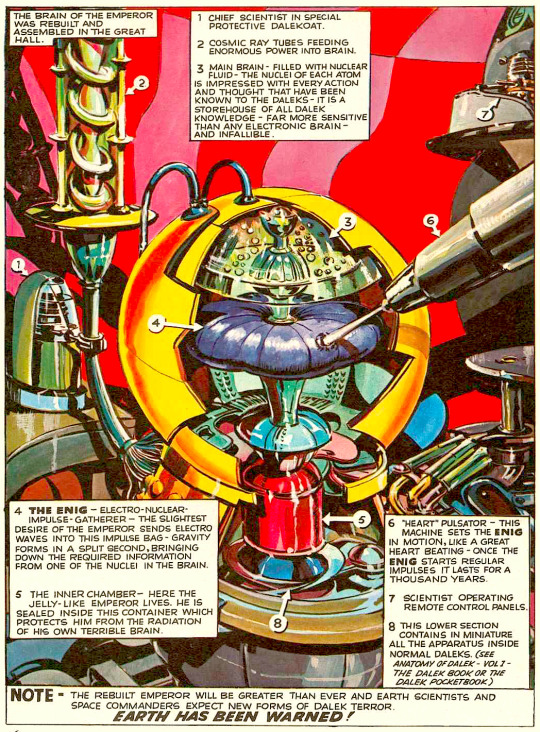
The almost surreal array of colours and shapes is so arresting as to obscure an important detai. Many have seen this page over and over, and yet still missed it. The recent(ish) ‘Anatomy of the New Dalek Emperor’ artwork from Time Lord Victorious clearly looked at this page for reference, in spite of the fact that the TLV Emperor is much more inspired by the old Emperor than the rebuilt one.
Let me spell it out for you: look at the Scientist Daleks in the top right and centre-left. Look at them.
The new Emperor is huge.
And what else?
That Scientist on the left is plugging huge wires snaking from the wall into the tower-casing.
He now resides in the Great Hall of the Dalek City.
The background wall is a weird checkered pattern.
In addition, the following facts are seeded throughout the earlier pages of The Secret of the Emperor.
The point of moving to the new casing was to grant the Emperor increased brain capacity (suitable for concocting masterplans).
He acquired said increased brain capacity to help the Daleks attempt to overcome humanity once and for all.
The Emperor has recently had a trautmatic but eye-opening experience with time travel.
Ignore the fact that the Emperor was here depicted with what appears to be a still fairly bulbous, and golden, head, and it doesn’t take a genius to figure out that this is very, very direct setup for how the Doctor finds the Dalek Emperor in The Evil of the Daleks — tower-like, in an imperial throneroom in the Dalek City, with a checkered wall pattern, planning out a complicated scheme to harness time travel as a means of defeating humanity once and for all!
Yes, the designs don’t quite match — but how could the artist behind the visuals of Secret of the Emperor have known precisely what Shawcraft would build, a year later, based on the same basic description by Nation & Whitaker? The parallels far outweigh the minor differences in execution. (It’s worth noting that elsewhere in the Outer Space Book a different artist drew what was clearly intended to be the Golden Emperor as a large, golden, but normally-proportioned Dalek, so it’s not like the visual descriptions of these scripts were exceedingly precise…)
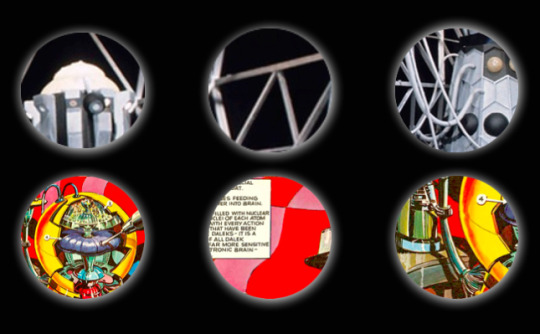
The rebuilt Emperor is never seen in the Outer Space Book outside of this ‘dissection’: he is heard throughout The Brain Tappers but kept carefully off-panel, and his new and dangerous new casing is pointedly not destroyed in the story’s conclusion. Well, of course not. That’s what Dr Who is for.
tl;dr: it is not a post hoc retcon, or even a secret, that the round-headed Emperor of the comics became the Dalek Emperor of Evil of the Daleks. A holistic view of the state of Dalek media in 1966-1967 shows that, in fact, it was the whole point that this be the Emperor of the comics; and that the comics had begun setting this up long before Patrick Troughton encountered Edward Waterfield on TV.
And thus, to circle back to Sandifer’s 2011 post, it is not enough to simply say that the “seemingly non-canon” comics inspired the show down the line. In fact in this instance, what appeared on Doctor Who existed for the benefit of the Daleks spin-off — not vice-versa!
#Daleks#Canon-Welding#Doctor Who#Analysis#Doctor Who Meta#Dalek Emperor#Dalek Prime#The Evil of the Daleks#Terry Nation#David Whitaker#Brad Ashton#The Secret of the Emperor#El Sandifer#Canon#Jacob Black
76 notes
·
View notes
Video
youtube
Kraftwerk are best known for being innovative pioneers in the field of electronic music, but by 1981, the rest of the world was finally catching up to them. Faced with living in the future they’d helped create, they released their last truly great album, Computer World, as a sort of reaction to the times. Find out more in my video, or by reading the transcript below the break.
Welcome to Passionate Reply, and welcome to Great Albums. Today, we’re talking about Kraftwerk, and what is perhaps their last truly “great” release: 1981’s Computer World.
Kraftwerk were, of course, one of the first groups to popularize the creation of music through chiefly electronic means. From their icy and robotic onstage demeanour to their stiff-shirted sense of style, just one look at them makes it clear the outsized influence that Kraftwerk have had on the genre we now think of as “electronic music.” While, at times, their significance can be over-emphasized, and I’ve always been critical of the way that the discourse on this all-male quartet has often squeezed out even earlier electronic pioneers like Wendy Carlos and Delia Derbyshire, it isn’t all for no reason. While Kraftwerk’s actual music often comes across as more accessible than experimental, the fact that they were doing it in the 1970s, long before synthesisers became a commonplace sight in popular music, should fill anyone with the sense that they were architects of the future.
Music: “The Model”
While “The Model” first debuted on Kraftwerk’s 1978 LP The Man-Machine, it was re-released as a single in 1981, where it saw substantial success in the charts. In those few short years, the musical landscape had changed, with younger artists like Gary Numan and OMD making headway in the charts with similarly synthesiser-centered songwriting. For almost the entirety of the 1970s, Kraftwerk had been contentedly putting along, secure in the knowledge that they represented the future of music. But now, as the 80s began, they were finally living in the world that they had made possible. The future had arrived for them--so what were they possibly going to do now? I think the best way to frame Computer World, and perhaps what makes it such an interesting album for me, is that it represents a reaction to the ways that the landscape of electronic music had shifted around the artists in these intervening years. On Computer World, Kraftwerk would both reflect as well as critique what younger artists inspired by them had started doing. It’s the first Kraftwerk album that seems to represent a true challenge being posed to these by now august and illustrious pioneers, forcing them to respond in new ways.
Music: “Pocket Calculator”
In many ways, “The Model” is a pop song--compared to most previous Kraftwerk compositions, it’s heavy on lyrics, and focused, surprisingly, on a human being, and a love story involving her. But I think the Computer World single “Pocket Calculator” is almost as good of a pop song as “The Model” is. Highly melodic, and almost candy-coated in its simpering exuberance, it has perhaps the hookiest hook anywhere in the Kraftwerk discography. I’m tempted to compare it to similarly bright and upbeat tracks from Yellow Magic Orchestra, such as “Ongaku”--particularly since it was also released in a Japanese-language version, as “Dentaku,” for that market. Still, there’s no avoiding that the subject matter of “Pocket Calculator” has taken a sharp turn back towards an iconically Kraftwerk subject matter: the inner life of the titular machine. While the narrator of the lyrics announces themself as “the operator” with the titular calculator, it’s also possible to interpret the lyrics as the voice of the machine itself. “I am adding and subtracting, I’m controlling and composing”--but who, indeed, is really performing these tasks: the operator, or the calculator itself? Perhaps a stronger example of Kraftwerk gone pop is “Computer Love.”
Music: “Computer Love”
Melodic, but also balladlike, “Computer Love” is an unambiguous return to the traditional pop theme of romantic love, absent from the asexual and perhaps childlike glee of “Pocket Calculator.” Its more plaintive hook is also an easy one to appreciate, and its theme is perhaps more universal: while listeners at the time may not have necessarily owned rapidly miniaturizing digital technology, surely, all of us have, at some point, felt lonely. “Computer Love” doesn’t just connect to that feeling, but it also offers us hope, in the form of an almost magical, futuristic solution for finding love. I think it’s the internal balance of “Computer Love” that makes me find it so captivating: it’s a song about despair at being alone, perhaps even intensified by the alienation of modern society in particular, but it’s also suffused with the romantic dream of computerized matchmaking services, which might, like so many other technological developments, tremendously improve one’s day-to-day life. In “Computer Love,” the machine is only a tool, a small piece of the overall human picture, and not the chief focus of the work--much as the camera for which “The Model” was posing was little more than a prop in that love story. But despite this optimism about online matchmaking, other tracks on the album seem more skeptical about our computerized future, including the opener and title track.
Music: “Computer World”
While Kraftwerk are best remembered as utopian thinkers, many of their compositions hint at the potential downsides to technological advancements, albeit subtly. Much like *The Man-Machine* alluded to works like Fritz Lang’s Metropolis and Karel Čapek’s R.U.R., the title track of *Computer World* prominently notes organizations like Interpol and Scotland Yard among those who may benefit from computers, hinting at fears of oppressive techno-surveillance expressed by works like Philip K. Dick’s “The Minority Report.” With its slinking rhythm and overall ominous feel, this track implies that we should be apprehensive, without necessarily stating what to fear, and I think that’s part of why it’s remained resonant. In today’s world of deepfakes and location tracking, we’re constantly vigilant over the nameless potential dangers presented by the machines in our pockets and handbags, even when we couldn’t explicitly state what they are. Our increasing distance from the album, in both time and technological progress, may present an obstacle to appreciating it as art. While it’s easy for me to get into the mindset of computers as something newfangled and exciting, having grown up earlier in the personal computer age and able to recall the way they were advertised and talked about in the 90s and 00s, I do wonder how this album sounds to my younger peers. At any rate, “Numbers” is the track that I think sounds the most like it could have been on any Kraftwerk album, and not just this one.
Music: “Numbers”
A classic example of how a simple conceit can fill a whole composition to its brim, “Numbers” remains one of Kraftwerk’s most iconic tracks. Nowadays, it might be best known for how heavily it’s been sampled by later artists, and the influence it’s had on hip-hop, that nephew of electronic music that is nowadays, somewhat arbitrarily, considered a separate genre unto itself. But ultimately, “Numbers” and its famous beat stand up perfectly well on their own. As a cosmopolitan panoply of languages recites the names of the numbers, we are reminded of the ways in which mathematics is a universal language. Not only does it unite mankind, but many have also wondered if it might someday be the key to communicating with people from beyond the stars--an honour also bestowed upon music itself. Structurally, “Numbers” is the second-to-last song on the album’s first side, and like many earlier Kraftwerk albums, it transitions directly into another part of a larger “suite,” connected both musically and thematically. “Numbers” becomes “Computer World 2,” which is not simply a reprise of the title track, but a sort of medley which also incorporates the whispering vocoders of “Numbers.” While in many ways, Computer World feels like an attempt by Kraftwerk to keep up with the times, the overall structure of the album maintains a sense of continuous, symphonic composition, not unlike the seamless “transfer” between “Trans-Europe Express” and “Metal on Metal” some years before.
The cover design of Computer World is another in the long list of the aesthetic triumphs of Kraftwerk, which, I maintain, are perhaps as important and influential as their music itself. Its bright yellows and greens remain eye-catching, as does its portrayal of the band members’ portraits, rendered on a computer terminal. Despite seemingly now only existing in cyberspace, their faces remain in the position we saw them in on The Man-Machine, projecting their beatific gazes towards the leftward horizon of the future. The struggle between the reality of a human being, and that which is affected by their simulacrum, is a strong theme throughout Kraftwerk’s discography, stretching back, at least, to “Showroom Dummies,” and the cover of Computer World seems to take it another step further. Now, we don’t even contend with the idea of physical replicas of humanity, in the form of trudging robots or glib mannequins, but rather with the idea of an ethereal, holographic doppelgaenger. With its title, the album asks us not only to consider computers as technologies in and of themselves, but about an entire new era, and a new way of being, which is brought about by their arrival and proliferation. In many ways, this way of thinking about the future was more correct than perhaps anyone knew at the time, and I think it’s this sense of vision that makes Computer World remain a vital artwork as opposed to a curiosity.
As I said in the beginning, Computer World is often considered to be the last great album Kraftwerk made, putting an end to their streak of classics that began with 1974’s Autobahn. Their follow-up to it was the troubled and controversial Electric Cafe, released in 1986, which attempted, unsuccessfully, to add more dance influences and samples with the textures of more traditional instruments into their sound. While I think Electric Cafe is an album not without its merits, it is certainly a substantial departure from the Kraftwerk sound we’ve gotten familiar with so far. I might characterize it as an album that perhaps went too far into the territory of attempting to keep up with the times, extending Computer World’s lunge for more accessible, lyrical pop further than it could reach. Whatever the motivations, it’s hard to hear Electric Cafe tracks such as “Sex Object” without being at least a bit startled at the group’s willingness to tackle the topic of sex so frankly. It might be the only Kraftwerk song in which being like an object or a machine is portrayed in an unambiguously negative light.
Music: “Sex Object”
I think my favourite track on Computer World is its closing track, “It’s More Fun To Compute.” With a straightforward repetition of the title as its sole lyrical content, and a brazen, strident synth blast propelling it forward, it’s another one of those simple, but utterly compelling tracks that Kraftwerk seem to have been full of. Despite the way it flips into something much more melodic later on, it’s the tumult of the opening bars that really sells me on “It’s More Fun To Compute.” I think the textural qualities are almost a bit reminiscent of the grating oscillations of their often overlooked earlier album, Radio-Activity. That’s everything for today, thanks for listening!
Music: “It’s More Fun To Compute”
22 notes
·
View notes
Text
In Defense of Teenagers:
Ok so. There seems to be a general consensus that Teenagers doesn’t fit on the black parade or that it ruins the trajectory of the album or that the song order of bp needs to be changed to fit the b-sides and drop Teenagers, or it should have just been a single- basically any option other than its inclusion between Sleep and Disenchanted would have been better. now, i’m not here to tell anyone that they’re wrong- i just want to offer an alternative perspective because i truly believe Teenagers is right where it belongs and that its inclusion on that album is, in my opinion, completely necessary to the album’s narrative arc. I want to focus on the way Teenagers builds into the foundation of the Concept Record, the way it bridges the gap between Sleep and Disenchanted so as not to delegitimize Disenchanted’s impact, and the fact that no other available material fits into the struggle the Patient endures at the end of the narrative (sorry this got LONG here’s a read more)
So, before we get into the meat of Teenager’s narrative significance, i wanted to briefly mention the way it makes Black Parade a more cohesive whole in relation to the material it is mimicking. Like Black Parade as an album is structured very differently from Pink Floyd’s The Wall- but it takes a lot of the same beats and recontextualizes them for a new purpose. Both records use war and relationship troubles and school and drugs to create an atmosphere that leads to disillusionment. In The Wall, this is quite literally the protagonist, Pink, building up “bricks in the wall” that isolates him from the rest of society and lead to a downward spiral into cynicism and hate. But Black Parade uses the same tools that The Wall does to say something different- things, specifically the actions you've made or the trauma you've endured, haunts you and makes your life seem insignificant in the face of what happens to you and those regrets are what causes the Patient to fall into a cycle of damnation and cynicism. This is representative of the Patient's descent through the afterlife- each new "layer" of the Patient's exploration is equivalent to a brick in The Wall's metaphor. Additionally, in this new context, this song in particular takes The Wall’s discussions of adolescence and the vice-grip control older generations attempt to force on teens and the disillusionment with the future and retells it from a new perspective- both literally in the fact the song is now more reflective of the 2000s post-9/11 and post-columbine culture, but its also literally from the perspective of the Patient as an adult. Teenagers, as a result, becomes a necessary piece of that puzzle- it is the refraction of Another Brick in the Wall repurposed to mean something new entirely- it’s no longer about kids being forced into complacency by a cruel education system from their own perspective (the children’s choir allows them to speak for themselves) but about the ways in which adults see those kids and why they decide to enact actions similar to those within The Wall. I mean even the imagery used in the song’s music video is purposely almost plagiarizing The Wall- it feeds into a separate analysis of the video and song outside the narrative as well- which i don’t have time right now to get into, its just very interesting that the band is bodily removed from their instruments at the end of the video and the teenagers in the audience have rendered them incapacitated (“they’re looking for a rockstar to kill” anyone?) it's the metaphorical tearing down of the wall from a completely different perspective. Anyway, the work Teenagers does for the narrative is it fits the album into the Concept Record Cinematic Universe- it is a piece that evokes the material it is influenced by to build off of the old to create the new- without it, the connections to The Wall would still be there, sure, but it wouldn’t be as complete- you cannot recontextualize the album without the foundation of Teenagers.
Teenagers is also, at its core, a subtle subversion of genre- using the blueprint of a specific kind of song to center the song within the timeline/narrative. In this case, the same way I Don’t Love You mimics and exaggerates the emotive and plaintive 80s rock ballad, Teenagers twists the classic rock of a bygone era to specifically call back on the stadium rock anthem. Black Parade, on the whole, does this quite frequently- most of its songs take pre-existing genre cues and subverts them in ways that play off of the expected tapestry of a concept record to create individual sounding songs that seamlessly transition into one another yet remain entirely separate. It maintains their presence as scenes in a larger tapestry- specifically the fabric of the Black Parade being a morality play. This serves two purposes, it allows for this exaggeration of genre to become a motif within the work (see mama, cancer, house of wolves, i don’t love you, wttbp -> they all play with a different, varied song type/structure that is distinct from each other) and it plays off of existing genre-stereotypes in ways that contribute to the songs overall function. I Don’t Love You, for example, undermines the fundamental purposes of sappy power ballads- to express one of the two dualities of love songs: the cheesy unconditional “i will love you forever” types or the plaintive, melancholic end-of-relationship song by instead focusing on the complexity of a not-quite-finished relationship. The ballad then shifts from an expression of love to one of human loss- and the loss is less about the individual speaking, but moreso about what the other character has become - it’s a mourning not for the relationship, but for the person themselves, who they used to be in a way. It shifts from the one-dimensional view of what a ballad can achieve and instead infuses the anger, the resignation, the drama, the transformation- it humanizes a very stock genre full of platitudes and uses our expectations to create something more interesting. Similarly, Teenagers takes a tired genre and utilizes the working mechanisms of its typical song structure to subvert and repurpose those into commentary- its literally a stadium rock song that devolves into a chant. Looking at the loud drumbeat that resonates in your chest, the all together now as a command that lures the listener into singing along, the addition of more chorus vocals at the end like a crowd is shouting along, the screaming and the solo on after another like the song is falling apart a little bit, all of these elements build into a song literally meant to be infectious and replicated by the audience. Herein lies one of the songs many interpretations- humans can be easily influenced by the media they consume, the perspectives they are fed. What happens when the view that we have of adolescence is cloaked in mistrust and violence? This aspect of the song is less about the band reconciling teenagers being moved to committing acts of violence and more in analyzing how an audience can be persuaded into believing the erroneous view of teens as fundamentally destructive- are you not repeating the chorus? do teenagers not “scare the shit out of you”? Obviously the band doesn’t want you to believe this but it does what you to think about why this perspective is so common. It's a cultural subliminal message that is present in songs and tv and books that we simply do not question- it is a chant we cannot help but join in on. Teenagers is a replication of that process, but is clearly just subversive enough (both as a piece of genre and just as a song in general terms) that the listener knows its commentary and not itself propagating that viewpoint. Every song on Black Parade does this kind of “genre-bending” to make a point in some way or another, so it's a significant reason Teenagers fits into the albums cohesion.
But,Teenagers isn’t just important to the album in its sound- it lyrically parallels Disenchanted in a way that effectively moves on from Sleep without losing the album’s emotional momentum. Sleep, conceptually and lyrically, is a very heavy track- its influence from the Dune soundtrack’s Final Dream turn a cinematic, swelling piece of instrumentation into an oppressive blanket of noise that bears down on the listener and the lyrics are referential to the patient believing themselves to be irredeemable and monstrous. It's also inspired directly from Gerard’s vivid and violent night terrors during his stay at the paramour- including a recording of Gerard’s recollection of those dreams, that mentions being choked, seeing loved ones die, burning alive, etc. To transition directly from such a dark, personal subject into a reflective acoustic number about the narrator’s adolescence would be tonally inappropriate and almost laughable- it would stop the progression in its tracks, while also doing a disservice to Disenchanted. Having a break is necessary! And it's even more appropriate for that break to be a song about teenagers considering Disenchanted is so nostalgic. Additionally, Teenagers brings up a really interesting narrative thread about the Patient becoming disenchanted with the youth that then directly transitions into a song about him losing faith in his values and sense of self- they are directly correlated conceptually. Looking deeper, Disenchanted is a punk song. sort of. more specifically, it is the foundation of a punk song that becomes a ballad through narrative framing- it takes punk cliches (running from the cops, the crowds, the imagery of guillotining traitorous rich celebrities) and turns them wistful and sad because the Patient is looking back at something they no longer understand or identify with, it allows the narrative to illustrate how the Patient feels like their life was worthless and didn’t amount to much and they’re just another stupid punk kid who grew up and didn’t achieve anything. and you can’t get to this point from Sleep because it would weaken Disenchanted’s impact, make it seem insignificant and petulant in the face of Sleep’s heavy and grand sorrow. Lyrically, you need Teenagers to bridge the gap between the war metaphors and the visualizations of hell and the all-encompassing nature of cancer in order to redirect the focus to the Patient and limit the scope of the narrative at the end of the album. Teenagers, within the story, then functions as the Patient reflecting on the nature of youth and, in the wake of Mama’s “we all go to hell” rhetoric, comes to the conclusion that teenagers are wholly violent, easily manipulated, and unsympathetic. It's another step in the Patient removing his own agency and viewing his life as predestined at the same time it allows the “plot” to focus back on the more nostalgic and mundane aspects of the patient’s life. Doing so makes Famous Last Words so much more significant because it forces the Patient to reconcile with his past before he can move forward (whether that's living or dying its still applicable). so, Teenagers is very important to the overall “plot” of Black Parade- it is fundamentally necessary for the pieces to fit together.
Another larger aspect of Teenagers' importance is that it introduces the fate versus free will internal debate central to the ending fourth of the record. The song lays the foundation for this thematic idea by being about the fated violence of the youth and how they cannot help but to respond to their world with anger and cruelty. This realization about adolescence by the Patient leads to him perceiving his own youth as destructive and worthless and in following the themes of guilt/regret and damnation it's this violence that began his path to hell or his current state of suffering. In that vein, Teenagers leads into the idea that your life is predetermined or that there is a destiny that we all have (in the Patient’s case its the absence of a future, or “a lifelong wait for a hospital stay”) and no matter what, you cannot fight that. While Mama gives a blanket statement about how "we all go to hell", Disenchanted centers the Patient's specific destiny by saying his whole life has led up to his illness and, looking further, there is the implication that life before that was retrospectively pointless. So, as previously mentioned, Disenchanted begins, structurally and lyrically, as a punk song- this sort of expression of youthful existence that, in any other song or under another faster instrumentation, would fit on some basement demo from 1986. But it doesn't stay that way, instead it actively subverts the genre it's cliches are lifted from- thinking specifically about “we ran from the cops” and the “roar of the crowd” that is juxtaposed with the change in structure or theme. Namely, punk songs (speaking generally here) aren’t wistful because there isn't really a sense of legacy in punk music. There's history yes, but most songs are about the immediacy of emotion, not existential questioning. The retrospective nature and the shift into a ballad structure are elements reflective of a change in the main character brought on by the disillusionment present in teenagers from a punk kid to a dying young man looking back on the banality of youth and the hypocrisy, the trauma and the lack of agency. It's so much easier to think that nothing matters and the perspective makes it so much easier to give up.
This build from Teenagers into Disenchanted regarding the Patient's fate allows Famous Last Words to become an even stronger end because it's in direct opposition to that perspective. Famous Last Words is a song that screams fuck fate and fuck the past- the only thing that matters is moving forward. The image of the Patient keeping on whether he’s walking into the afterlife or continuing to stay alive as long as possible becomes something difficult, something he had to fight to achieve - he had to struggle to find a new understanding. That he can't be "afraid to keep living" or "going home" and that these are concrete actions, a use of free will. And that free will is very specifically defiant. Regardless of how you view the Patient's end, he makes the conscious decision to accept the present and move forward. We are not fated to die alone, nor is life worthless. Black Parade proves that the opposite is true, that we must grow to accept the value of life, and it's so much stronger having the Patient actively reject nihilism and apathy. Ultimately, Teenagers introduces the main thread of the final songs and without it, those songs would be narrative incomplete.
So, Teenagers has a valued place on the album sonically and within the narrative whole, that much is clear. But another reason that the album order of Sleep, Teenagers and Disenchanted is important is that none of the other material written for the album comes close to filling its place. In this case, I am going to be specifically talking about the b-sides since the demos are incomplete and we have no idea what the final version would have sounded like (but I would contend they don’t fit either). Beginning with the easiest song to discard from the narrative- My Way Home Is Through You has its moments in the lyrics but it's completely out of place musically- plus the tone is a little too hopeful for this point in the album which does not gel with Disenchanted’s hopelessness. It's also incongruent with the album since Disenchanted is effective as the only “punk” song on a record that plays with and explores genre and having this come before it would ruin the previously mentioned motif of each of the songs being individual and unique in form. Also, it really adds nothing to the fate vs free will theme- meaning its placement would weaken the disenchanted/flw combo ending. Moving forward, Kill All Your Friends seems to fit, considering its cynicism and nostalgia, but the bridge (“you’ll never get me alive, you’ll never take me alive, do what it takes to survive and I'm still here") doesn’t fit the Patient’s slow decent into apathy at all and contradicts Disenchanted’s loss of faith in the idea of living- it's too hopeful and centers survival and resilience in a way that makes it an ineffective substitute for Teenagers as a bridge song. And finally, Heaven Help Us is too religiously centered- it would refocus the fate vs free will discussion in the context of god/angels when that isn’t a theme in the album up to this point (hell is the grounded point of the album- the protagonist has already accepted their fate by Mama- having a reconciliation with a lack of faith or the absence of God seems completely out of left field when its just not an established part of the narrative) Black Parade is actually one of the mcr albums with the least references to god/angels in the heavenly religious sense- more centered around the human struggle against determinism: the usage of damnation is Catholic inspired but divorced from the division of hell vs heaven and is instead about guilt and worthiness and agency. The presence of angels or god or any divinity would simply weaken the narrative by expanding the album's focus outside its own limitations. Also, the Patient isn't ever a martyred figure, if anything he is purposely pathetic. Including any comparison of the Patient to Christ ("give you all the nails you need") or a saint unravels the key feature of the Patient's character: that he is insignificant. His insignificance and his struggles with his past actions make him a character who must find the strength to live through the guilt and pain to prove that everyone is worthy of life. The overarching purpose of Black Parade is emphasizing that no matter what we've done and how dirty we feel, we can move forward and either accept our afterlife or we can find value in being alive. Because of this contradiction, Heaven Help Us destroys the central theme of the entire album if it is included. With all of this in mind, it seems to me that the b-sides are their own nebulous thing- they don’t tonally fit on Black Parade (though I do think they fit together and are interconnected thematically) but any of them would break the flow since they seem angrier and gritter in a way that is noticeably absent and would be at odds with from a lot of Parade’s resignation. They also just do not complete the narrative, they are simple not as good as Teenagers at bringing all the pieces together.
If I still haven’t convinced you, a bonus reason Teenagers is a valuable memeber of the Black Parade tracklist, Ray was the only one who believed in the song- he called it genius (x) so listen to mr chemical romance himself telling you the song is Good and Important :)
anyway now you should, at the very least respect teenagers based on a couple thematic ideas expressed here, if not also understand why it’s imperative to black parade as an album, as well as the narrative itself. <3
#here she is. my teenagers manifesto. months in the making :')#this is the equivalent of getting on my biggest soapbox and screaming for hours please enjoy <33#my posts#mcr assigned reading#my chemical romance#mcr#black parade
230 notes
·
View notes
Text
Leafs: New Additions
Welcome back to another year in Leaf Land, as always at a most critical nexus. There’s a lot of negativity, and as usual some of its well earned, and some of its too far. Within all that, it’s important to acknowledge the progress that this group has made, free from the fervid luster of hope offered early in the Matthews era.
The novelty of the Canadian Division, and the 4 separate leagues that took part in the 2021 season did cap the amount this team could change our minds, but having a strong and consistent regular season and finishing top 10 in goals against, was a huge development, and continuing those results to a full 82 game schedule is still an important step. In general, this fan base took the first sign of positivity and grew championship expectations, to the point where the past 2 or 3 seasons many have been saying “there’s nothing to prove until the playoffs”, and even to this point that simply isn’t true.
Mrazek
After spending a large part of the past 2 seasons desperately searching for depth and stability in the sport’s most important position, acquiring Mrazek is certainly the most important move of the offseason. He’s probably in a cluster of mid tier starters, sometimes called a tandem starter or 1B, similar to Frederick Andersen, the fact that he’s younger and cheaper than Andersen is also a plus. He’s coming off some strong seasons behind a very good Carolina team, meaning he’s been a focal point for a successful team already, although he was not the starter in each of the Hurricanes’ past 2 postseason runs. He’s started 40 games in a season twice, meaning he’ll get at most 120 games in over the course of his 3 year deal. He’s had up and down seasons, but has shown flashes of strong play. He has a flare for the dramatic, some style to his play, and entering his age 29 season should be able to deliver a strong segment of his career. The best case scenario, or perhaps a reasonable comp would be similar to what Halak has been able to bring in his 30’s, which is starter level of play over 35-45 games a season, which does fit well with the expectations on Jack Campbell to play in 40-50 games. Ultimately the hope is that Jack can really run with the starter role, but Mrazek will be keeping the level of play in net high.
Menell
Menell takes the mantle as this year’s KHL import on the blueline, a staple that’s seen Zaitsev, Ozighanov, and Lethonen pass through to varying degrees of success in recent years. Menell, unlike the others, offers a stronger resume on the smaller ice surface, putting in several strong AHL seasons with the Iowa Wild before his most recent all-star season in Russia. Similar to Lethonen, he is a strong offensive player and could figure into a role on the power play. At this point he’s done everything he can besides earn some playing time at the top level, and provides an interesting depth option to the blueline.
Dahlstrom
It can be difficult for low-scoring defensive players to stand out, and that might be the case for Dahlstrom. The 26 year old Swede has 2 years experience in the SHL, followed by 4 increasingly strong stints in the AHL, with a 35+ game run on the porous 18-19 Chicago team and 10+ games with the Jets the following year. He did eventually earn an Assistant Captain role on Chicago’s AHL affiliate. Despite all that, he’s only played 35 games or so the last 2 years, as he probably got squeezed as a fringe player throughout the first covid season. He certainly is qualified to fill in a depth role, although surely in a different style than Menell. Together they represent good reinforcements with potential upside should injuries occur. He’s big, skates well enough for his size, has some passing abilities.
Kase
Another player who hasn’t played all that much recently, Kase has fought a lot of tough injuries over the recent years. Kase is still only 25, but it was all the way back in 17-18 that he scored 29 goals as a member of the Ducks. He has posted really strong possession and shot metrics throughout his career, and plays a very rambunctious and tenacious style. Hopefully he can stay healthy and at least have a chance to continue his strong play, but with concussions we can only know so much. A one year deal means there isn’t any long term risk, and best case Kase provides some of the “all terrain” capabilities that Barclay Goodrow brought to the Lighting the past couple seasons.
Ritchie
Ritchie is a big power forward, who can manage to shovel in 10-20 goals a year. Although his career high comes from his time in Anaheim, it’s reasonable to expect he could have a career season over the 2 years of his contract. He does bring certain qualities lacking from the forward group at this point and could fit well somewhere in the top 6. Even with Hyman in the lineup, when Simmonds missed time last year there was a noticeable lack of net front presence, which Ritchie should help satisfy. Personally, I’ve spent a lot of time being thankful the Leafs took Nylander instead of Ritchie in their draft year, but Ritchie is still young at 25 and is a quality add to the forward group. He might take an excessive amount of penalties, but that could also “even out” and earn the Leafs a few more calls as well.
Kampf
As we get to our 6th addition, a pattern is clear, young free agents (mid to late 20s) who should have more in the tank than the older additions of last season, and perhaps with their best seasons in front of them. That is certainly the case with Kampf, who has already proven to be an effective bottom 6 defensive centre in the NHL. He is in crazy good shape and is good at faceoffs. In his introductory presser Dubas mentioned he’s been on the Leafs’ radar for a while, and that they saw more offensive upside to his game. He certainly has a similar style of play to Danault, helping break cycles in the defensive zone and supporting transition well up ice, and could really help unlock stronger play from the 3rd or 4th line. In particular I think he would pair really well with a strong defensive winger who can carry the puck through the neutral zone, Ilya Mikheyev, and/or David Kase.
Bunting
Bunting “came out of nowhere” to score 10 goals in 20 games for the Coyotes last season, and we should not be expecting 40 goals next year. That being said, signing him to 2 years at only $950,000 is a great deal. For the brief time Jared McCaan was a Leafs I was excited about adding a complimentary top 6 player who could shoot well to pair with Marner and Matthews. Bunting definitely has the chance to live up to that. It’s obviously not at Matthews’ level, but Bunting can score from the high to mid slot. He’s speedy enough to pressure through the neutral zone and off the rush, and has some skill in making moves to beat defenders and goaltenders. He isn’t afraid to get to the dirty areas and had a few goals tipping in shots from the point. He is also feisty, gets under opponents’ skin and hustles like his job depends on it. He said in his introductory interview that he had spent long enough in the minors that when he finally got called up last season he played with nothing to lose, and compared his style of play to Marchand. Although that is a lot of lofty rhetoric, it’s easy to see how this could be a huge win for the franchise. If he proves to be 4th line contributor it’s a good deal, but there’s good reason to be excited beyond that. It might be a bit off topic to say I think that it’s important that Matthews and Marner’s liberate has a good enough shot to capitalize on the opportunity they will have as well as the tenacity Hyman brought so effectively, and Bunting has the tools to do it.
Gabriel
Gabriel is a fighter with social media presence, and especially for a pro hockey player, tries to be inclusive. I could see him being called up and deployed circumstantially. Although Simmonds and Ritchie have both thrown their share of fists, having a DH of sorts might be useful? Regardless, as a cultural focal point of both hockey and Canada the Leafs have the opportunity and responsibility to do their part in changing our culture for the better, and considering the league minimum cap hit this signing represents checks of few different boxes in terms of “intangibles”.
Semyonov
Semyonov has played parts of 5 seasons in the KHL, including a couple deep postseason runs as a middle 6 forward and eventually became an Assistant Captain. At 26, there doesn’t seem like a great chance he’ll be a factor at the NHL level, although he should get a fair shake at training camp. It is more likely he fits in as a veteran presence on a Marlies team that will feature a lot of Russian players, from Amirov, SDA, Gogolev and Abramov. The Marlies will look to be a lot stronger this year and those 5 forwards will look to be a big part of that. He gets to the net and most of his goals will be from rebounds and scrambles in front. He has some good puck skills, which will be shown off with some fancy passes. He’s big and fast enough to have some effect on the forecheck.
Way Too Early Lines
Bunting Matthews Marner Kerfoot Tavares Nylander Mikheyev Kampf Kase Ritchie Spezza Simmonds Engvall Brooks
Reilly Brodie Muzzin Holl Sandin Dermott Liljegren
Campbell Mrazek Hutchinson
Notes on fringe players
Mikheyev has been taking some heat recently. He clearly had trouble converting chances into goals and his wrist injury could have been a huge factor in losing confidence. He is good defensively, and is a strong enough skater that he’s able to transition through the neutral zone really well. Despite being a powerful skater he does seem to look a bit like an old man at times. It’s easy to see how he could be similar to former Leaf Michael Grabner, in that whether he is converting on breakaways or not could fluctuate his goal totals enough to drastically change opinions year to year (both are strong on the pk as well).
Engvall shows flashes of brilliance in a lot of ways. Speed and size to defend well, soft hands and really good passes, scoring touch, but somehow looks like he has trouble putting it all together. Dubas and Keefe have had him for a long time, and with one year left on his deal it might be his best chance at becoming an NHL regular.
Brooks will have to replicate his strong play from last year. He looked really strong alongside Spezza, where he was able to use his hockey sense and passing skills to his advantage. It is not a given that he’ll be able to, but he’s continued to show signs of growth so maybe he can continue to surpass expectations with more opportunities.
Liljegren has all the physical tools to be a good NHL defender, skates and passes well enough to beat forechecks, physical enough to play the body, but he’s looked a bit lost at times. I think with strength and experience we’ll see him settle into a regular role, and it’s not an indictment that he hasn’t got there yet, even if he spends most of his time in the AHL again this year. It might be a bit much to rely on a Sandin-Liljegren pairing when everyone is available, but I would love to see him get a chance alongside Muzzin at some point.
3 notes
·
View notes
Note
Just bcos u PERCEIVE SessRin as something that promotes pedophilia and grooming doesn't mean that's how the author portrayed it. It's disappointing to see that antis force such idea, as if they know what's inside Rumiko's mind. It is fine if u find sessrin cringey. Just don't force your idea of pedophilia and grooming as THE CORRECT PORTRAYAL OF SESSRIN.
Hello there, nonnie! You had quite the party in my ask box, I see. Breaking it up in parts may actually help me get to the point and address your concerns swiftly and accordingly. Here goes nothing. 😉
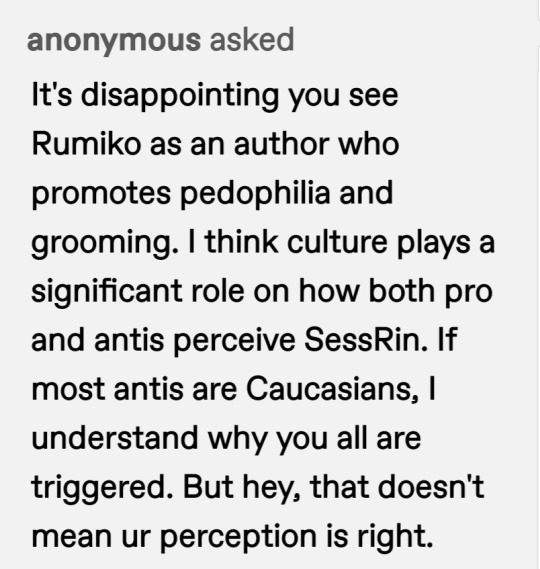
This answer is for your first two asks by the way. Firstly, you're putting words in my mouth because I do not view Rumiko as an author who promotes pedophilia and child grooming and never have. She never once placed an ounce of romance into their scenes. Rin was essentially introduced to serve as a catalyst for Sesshomaru's character growth. That's major in and of itself, which is why I'm not sure why she needs to be the mom on top of all that she's already done for him. It was you, Sessrin shippers, who had to go and make it romantic, not us. It was you who took every innocent scene and turned it into a romantic one. You'll even use some of their scenes as proof they will end up together, then back-pedal later and say those very same scenes weren't romantic in order to protect the sanctity of your ship. I mean, which is it? It can't be both, it's either one or the other.
I repeat, NO we don’t actually think Rumiko wanted to portray this relationship with pedophillic or grooming tendencies. It's you shippers who insist there is no other way for their relationship to evolve, as if you speak on behalf of Rumiko. Your interpretation of Rumiko's work is what implies child grooming; she may not be condoning it but your perspective sure is. You talk down to antis who disagree, because in your opinion, your interpretation is not only superior but already canon in your eyes. You're doing a disservice to this fandom by spreading false information like that when you try to pass it off as official. So if it's anyone that assumes they know what goes on inside Rumiko's head, it's YOU. Somewhere down the road in the (un)foreseeable future, it's you who changes course since remember we were all in agreement at the beginning that their relationship wasn't romantic. So what did I miss? Please break it down for me and explain what exactly influenced you to change your mind, then describe in detail how again this transition in their relationship magically came to be. It's you who came to that decision on your own- nobody helped you get there, and certainly not Rumiko (as you said yourself). The user boycottyashahime put it better than I did, so here is the link to their post. I highly recommend you read it if you haven't already. I urge you to keep an open mind about it while reading, too. You may not like what they have to say, but there's no denying they make excellent points all the same.
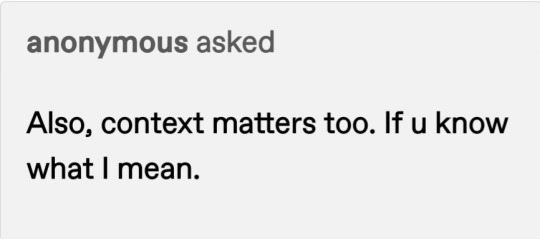
I'm pretty sure I catch your drift, but can you clarify if you're referring to historical context or cultural context? I suppose both can be applied here. haha Anyway, from what I gather, you believe that fans should be on board with the idea of Sessrin and at the very least tolerate the pairing. Whether they ship it or not, you believe this simply for the fact that the story takes place in the feudal era and couples with a similar relationship back then were more than acceptable. The thing is, we may be transported to Feudal Japan in this story but we're still taking our modern day morals with us for the trip. I have a whole ass blog dedicated to the significance of fiction in real life (convienently pinned on my page) if you wanna check it out. I also discuss what age-appropriate content is and isn't for Inuyasha viewers in this recent ask here that I find is also pretty relevant to the convo.
Alrighty, moving onto your next point. I can't stress enough to you guys that this isn't a mere Caucasian vs. Non-Caucasian dilemma. I'm a POC, so I ask that you please not presume to know things about me you couldn't possibly know unless we met or I shared it with you. In fact, many of the other antis I frequently chat with are POCs like myself. So for all that's good and holy, please stop ignoring us when we say: THERE ARE FANS IN JAPAN WHO HATE THIS SHIP TOO. THIS ISN'T A DIFFERENCE OF CULTURE, THIS IS A DIFFERENCE OF OPINION (& FACT). It may have not been called child grooming during that time, but that doesn't mean that it wasn't; it just went under a different name, that's literally it.
Let me give you another example. So if I'm watching a movie about WWII in Nazi Germany, am I supposed to sympathize with an SS officer if the story is being narrated from his point of view? Because in his mind and during that time period, his ideology is right. Like a lot of Germany during that war, I rally to support his leader for what is in my opinion a just cause. Tell me, how does context matter in this instance? Does it matter so much so that you would adopt the same ideals just because it was "historically accurate" and you don't see anything wrong with it when you put yourself in their shoes? Does the "it's just fiction" defense come into play here, too?

The illustration I believe you are referring to is the calendar with that one official illustrator for Inuyasha, right? The thing is, an official illustrator doesn’t equal the creator of Inuyasha. They may support the Sessrin ship, but their work has no connection to the Inuyasha series in any way besides the name affiliation. I've heard that the illustrator also included Kagome x Koga art, so should we take that seriously then too? Rumiko never once alluded to a future romance between Sesshomaru and Rin, to which you even (kinda) agreed. She described their relationship as neither parental or romantic, and she added that she even contemplated making Rin a boy at first. Fun facts, y'all!
I've heard about those magazines but they sound fishy to me. Would you mind sending me a link to a reliable source that comes with an English translation? I'd like to emphasize again that illustrators or VAs can do and say as they please, but their opinions are still only opinions at the end of the day. Nothing is set in stone until Rumiko says it is.
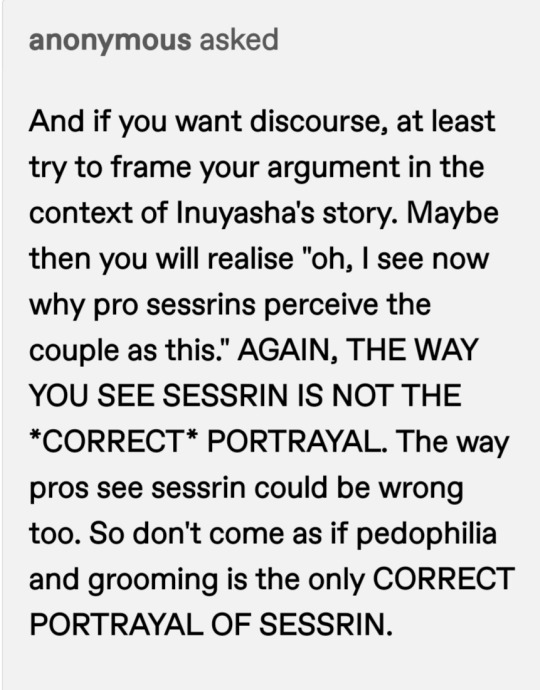
For one, I never said my interpretation was the only correct portrayal. That's you putting words in my mouth again. What I did say, however, was that my interpretation was more logical and reasonable than yours based on popular and widely-accepted story patterns found in real life and in fiction. Look this isn't about who's more "correct" or not. You can perceive Sesshomaru and Rin's relationship any damn way you want, BUT what you cannot do is dictate how we react to your depiction of this ship. You can't demand us to view your ship a certain way to fit your preferences. I'm sure all the hate on your ship can be unbearable at times, but that's just the cross you'll have to bear for supporting such a problematic couple. If a large part of any fandom is strongly against a pairing and what it represents, then there's usually a very legitimate reason for that. You may not want to hear this, but certainly you must realize there's some truth to it all. A couple of your fellow shippers have even admitted to me that Sessrin would be wrong IRL. You see what I mean? Even if we find the ship gross, antis don't care if you choose to ship Sessrin. All we care about is you acknowledging that, like IRL, Sessrin potentially poses a lot of problems for young viewers and how they come to make sense of and view similar situations that are borderline grooming or the very thing itself. Teens watching this show are more vulnerable and impressionable, which is why it's crucial to not show relationships like Sessrin in a favorable light. If they're ever put in a situation IRL that resembles Sessrin, they need to be aware and understand that it's not at all normal or healthy for that adult to make a move on them. Let's say Sessrin does go canon, then that would mean Rin had to get pregnant around 14 or 15. Sending that kind of message to an audience made up of mostly teenagers isn't exactly wise if you ask me. Please really think about that and sit with it if you need to.
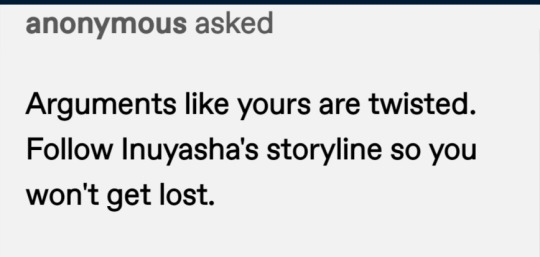
I'm positive I'm following the same story, thank you very much. Also, how can you be so confident making a statement like that when I have actual Sessrin shippers praising me for making valid points? Sorry to break it to you, but I don't think I'm as lost as you claim me to be or wish that I was.
That's a wrap, peeps!
Read over what I had to say again later and then get back to me if want, but only write me back if you plan to be respectful. Otherwise I will decline to answer. Just keep that in mind. And may I suggest only sending 1 or 2 asks at a time? Please and thank you!
I think I may know exactly who are, nonnie, but I can't say for sure. Besides, it doesn't really matter, as you have a right to stay anonymous if you so wish to. Listen, don't forget you are also more than welcome to interact (but appropriately) on my blogs/asks/etc. If you are who I think you are, then you recently did make a comment on one of them but didn't stick around when I replied back (and for good reason). Finally, if you hope to ever have a real discussion about this topic someday, first put your ego aside and refrain from throwing insults and then I'll hear you out. I have never once put you down in all of our interactions, so there's no need to show up here all riled up and aggravated in the first place. There's also no need to laugh at or mock other's opinions. Don't take jabs and assume I must not know something about Inuyasha just because I don't support your point of view. I may not agree with your opinion, but you don't see me having a condescending air about it.
Apologies if you're not the member I believe you to be, but no offense, you probably still needed to hear all of that too. It's not included here since I answered it immediately, but that final ask you sent me where you got angry and assumed I wasn't going to answer you was totally uncalled for. If you ever hope someday to participate in real discourse with me or any other antis, you should take my advice and seriously chill and learn how to be patient.
Hope this finds you well, nonnie!
40 notes
·
View notes
Text
VLD S8E13: The End is the Beginning
Season 8 Episode 13: The End is the Beginning
Transcript by @dragonofyang
Summary: As the Paladins and Honerva battle, they find themselves at the source of all realities in the final showdown for the very existence of the universe.
[Google Doc]
Keith: We have to take the fight as far away from here as--
Allura: Now let’s finish this!
Lance: Incoming!
Shiro: We can’t let this happen. She can’t get away.
[Transition to the Atlas-Voltron mech floating in a black abyss lit by glowing white tendrils.]
Keith: Is everyone okay?
Lance: Yep.
Pidge: Here.
Allura: Yes.
Shiro: Does anyone have eyes on Honerva?
Lance: What is this place?
Allura: I--I’m not sure.
Honerva: This is the beginning. And the end.
Allura: Can--can you all feel that? These strands are…
Lance: The only remaining realities left in existence.
Pidge: This place is the source of time, of space, of…
Hunk: Everything.
Honerva: I will end this once and for all!
Allura: She’s destroying… all realities!
Keith: She’s destroyed everything. There’s only one reality left.
Allura: No, please. If Honerva destroys this final strand, all of existence will end with it!
[Scene change to a white abyss not unlike the rift, but it’s the source of all realities.]
Honerva: Where are we?
Allura: The connected consciousness of all existence.
Honerva: You think you’re safe here? Soon all will cease to exist.
Hunk: You have to stop this. All these worlds, all these realities, they deserve to live.
Honerva: Those realities are flawed and weak, living out the same pathetic cycle of war and pain.
Allura: There is beauty in their flaws. I lost my father, my mother, my planet to this war, but I’ve gained a new family and a purpose stronger than any I could have imagined.
Pidge: Humans began very flawed. There were wars, hate. But with each mistake, they learned and grew.
Shiro: And now we reach out to other worlds to pass on those same lessons and spread them across the entire universe. Like your people once did.
Hunk: And with every new world touched, the message grows.
Keith: Every world, every reality. We wouldn’t exist without the others.
Lance: Our differences are what make us stronger.
Honerva: You think your words mean anything to me? I’ve lived multiple lifetimes, and all of them filled with pain and loss. If I cannot experience the simple joys of life, why should anyone else?
Allura: There was a time when you loved more than just your family, a time when your fascination with how vast the universe is gave way to your desire to help and uplift others.
Lotor: The beginning of Altean alchemy.
Honerva: You tried to help him.
Lotor: ...the tales you grew up with…
Honerva: He was happy. He deserved better. Better than I could give.
Allura: Lotor may have been misguided, but ultimately he wanted to preserve life. Honor your son. Help me change this.
Honerva: I’m sorry, but the damage is done. There’s nothing left to save.
Allura: I can change the quintessence within your vessel. Your son helped me learn how to transform it from a destructive force into a life-giving force. But I cannot do it alone.
Honerva: But, that would require…
Allura: I know the risks. I’m afraid this is where we part ways.
Hunk: Wait, what?
Keith: Allura.
Lance: What?
Pidge: No.
Allura: This is our only chance to undo what has been done, to save all of existence. I have to take it. It is my purpose. Your paths go on. Mine ends here.
Hunk: But there is no Voltron without you.
Allura: Voltron isn’t needed anymore. The rest of the work is up to the people. And they’ll have you to guide them, Hunk. Goodbye, Pidge.
Pidge: I’m gonna miss you, Allura.
Allura: Remain curious and fearless.
Shiro: Most of them won’t know the sacrifice you made so they could live.
Allura: And they’ll never need to. Your selflessness taught me that. Thank you.
Shiro: You never have to thank me for anything.
Allura: Keith… I cannot thank you enough for all you’ve given me.
Keith: Allura, when you accepted me, it helped me to accept myself. Thank you.
Allura: There is greatness in your heart and in your actions.
Lance: No. Allura, there--there has to be another way.
Allura: There is no other way. This is all we have.
Lance: But you’re too important to the cause. You’re--you’re too important to me.
Allura: I’ll always be with you, Lance. And I’ll always love you.
[Transition to the two mechs once more as all realities explode from between the two of them and the paladins wake up.]
Keith: Is this…? Are we…?
Pidge: Yeah. It’s our reality.
Lance: She did it. She saved us all.
Hunk: I don’t remember that planet being there before.
Lance: It’s Altea.
[Timeskip transition, with the text reading “One Year Later…” as we open on the flame of Feyiv.]
Keith: With the return of Planet Daibazaal, the Galra Empire is at a crossroads. For too long, the people of this extraordinary civilization have been manipulated by a dictatorship that placed a misguided sense of self-preservation above all else. It was a tragic, unfortunate series of events that led us down this dark, never-ending path of power and greed. But now we, the citizens of the Galra Empire, have an opportunity to make right all of the injustices set into motion by our forefathers. Because of the sacrifice made by Princess Allura, we have been given a second chance to come together in rebuilding the Galra Empire by joining the Galactic Coalition and ushering in a new era of peace across the universe.
[Scene change to the IGF-Atlas flying through deep space.]
Male Chancellor: Your armies have attacked us at every turn.
Female Chancellor: If you had just agreed to our terms, the attacks would not be necessary.
Male Chancellor: You are occupying a peaceful settlement!
Female Chancellor: Our people were starving!
Hunk: Chancellors. Please, sit. Dinner is served. The filet of bandrillo, spiced with the seasoning from the plains of planet Mabo, alongside pilaf of long-grain forlongian brill from the vast fields of Antidoll. And it’s accompanied by a cider made from the petals of the Altean juniberry flower. Bon appetit.
Female Chancellor: Delicious.
Hunk: And it wouldn’t be possible without the cooperation of all three planets of the Xritoo system. Much like my cooking crew, comprised of aliens from all across the cosmos working together to bring you this delicious meal. Princess Allura, the very person we celebrate on this day, once said, “We are always stronger together.” If the people of your planets work together, so much more can be achieved.
Shiro: Honor her by following in her footsteps and walk in the path towards peace.
[Scene change to Pidge and Matt in a robotics lab as they build an android.]
Pidge: All done.
Matt: So, have you been thinking of any names?
Pidge: Yeah, I was thinking of Chip.
Matt: You and your puns.
Colleen: Katie, your father’s got the teludav all warmed up for you. Better get going. You don’t want to be late.
Matt: Don’t worry, Pidge, I’ll have Chip all ready to go by the time you get back.
Pidge: Just don’t initialize until I return. I want to witness Chip’s first moments of consciousness.
Sam: Have a good time, honey.
Pidge: I will, Dad.
[Scene change to New Altea, where a new Castle of Lions is being constructed.]
Merla: Construction is on course.
Coran: Ah, most excellent! How are the preparations for tonight’s feast coming? It has to be perfect. It will be the first Celebration of Allura. The first of many to come.
Merla: As soon as we can get access to the location, we can begin setup. But it’s currently occupied by your friend, sir.
Lance: And had Princess Allura not seen that there was still good left in Honerva, we most likely would not be sitting here today. She grew to understand that there is good in everyone.
Balmera Girl: Even Emperor Zarkon?
Lance: Yes, even Emperor Zarkon.
Balmera Girl: Do you miss her?
Lance: I do. Very much. But I’m reminded of her everywhere I look. So in that way, she’s still very much with me. With all of us, actually.
Altean Child: Now that you no longer pilot the Red Lion, what do you do?
Lance: Well, I help run a small farm back on my home planet with my family. It’s a simple life, just the way I like it.
Altean Instructor: Alright, everybody, I think Paladin Lance has somewhere to be in a few doboshes, and you all have class to get back to.
Kids: Aw!
[Scene change to the paladins and Coran all sitting at a table loaded with food in front of Allura’s memorial statue.]
Pidge: I mean, seriously, though, Earth has come a long way. It’s a hub for all alien activity now that my dad’s stabilized his teludav technology.
Shiro: That’ll make travel on the Atlas much easier. We’ll be able to reach so many more sectors with the improved mobility. Not to mention the supplies we’ll save with the shorter journey.
Hunk: Yeah, yeah! We’ll have so much more room for the cooking ingredients. People are just so much easier to reason with when they’re full. Man, this diplomacy thing isn’t nearly as easy as Allura made it look.
Keith: Right? But then, she did make everything look easy.
Shiro: Speaking of which, how are things going on Daibazaal?
Keith: We’re calling for an election to select the Galran representative for the Galactic Coalition. So that’s a step in the right direction.
Lance: Let me guess, they asked you to be their leader and you said no?
Keith: Yeah, pretty much.
Lance: Classic Keith.
Coran: Allura would be proud of your decision, Keith. I think she knew that you would always be the key to the Galra’s future. Just around this table, I see so many lives touched by her actions. For some of us she was a diplomat, a teacher, a leader, and a friend. But to those of us around this table, she will always be family. To Allura!
Paladins: To Allura!
[Scene change to Lance’s quarters in the middle of the night.]
Lance: Huh?
[Scene change to the epilogues, which are without dialogue. The text narration follows in order.]
The Holt family established the next generation of Legendary Defenders.
Hunk created a culinary empire, bringing the universe together, one meal at a time.
Lance continued to spread Allura’s message while surrounding himself with the things he loved.
Kolivan and Krolia became the Galra representatives to the Galactic Coalition.
Keith helped transition the Blade of Marmora to a humanitarian relief organization.
Shiro found his happiness and finally left the battle behind.
End.
#vld#voltron#transcript#allura#keith#shiro#hunk#matt holt#sam holt#slav#lance#coran#lotor#honerva#merla#colleen holt
4 notes
·
View notes
Text
Transformers: Universe
Hello Tumblr! Here’s my entry for Transformers: Universe. As I mentioned last time, I’m working on something and I’m still trying to figure out the mechanics of it. Next week will likely be an essay outside of the main project. Enjoy!
Transformers Universe(2008) is the second line largely focused on giving Generation 1 characters updated figures. Universe continues many traditions established by Classics, but uses its larger scale to explore. The line was much larger than Classics, and featured significantly greater diversity. Unlike Classics, Universe featured many figures in most of the size classes it featured, and expanded its offerings into the Ultra size class. Similarly, Universe homaged characters from parts of the franchise other than Generation 1, featuring several characters from Beast Wars and even one from Armada. However, Universe also drew much inspiration from Classics, and is in many ways a spiritual successor to it, as well as the first Transformers Universe line, which occurred in 2003. Transformers Universe represents an evolution of the concepts first introduced in Classics, often influenced by design practices from the wildly successful Movie lines. Universe is also a moment where HasTak were still refining their relationship to the concept of a Generation 1 homage line, and exploring how such a concept could be executed in practice.
Much like Classics, Universe featured an assortment of legends class figures. Again like Classics, most of these were redecos of Cybertron figures.(Jackpot) However, unlike Classics, six Generation 1 characters, namely several mini-vehicles, received new molds at this price point.(Jackpot)
Universe featured a significantly larger proportion of new mold deluxes than Classics had. As the Wiki notes, it was not only the number of figures that changed, but their engineering.(Jackpot) Universe was the first CHUG line released in the wake of the live action Transformers film.(TheLastGherkin) As such, many of the engineering changes that line pioneered are visible in its new molds. Where Classics had demonstrated an Armada or even Beast Wars era tendency towards direct approaches to transformation schemes and large tracts of solid, unjointed plastic, Universe explored more joints, more panels, and less intuitive transformation schemes. Figures such as Ironhide and Nissan 350Z mold feature intricate paneling and signature Movie-style backpacks of vehicle mode shell. Galvatron features an unintuitive transformation scheme that rivals RID Sideburn for getting in its own way and baffling complexity.(Peaugh)
This is not to say that all Universe toys are infamously intricate. Rather, the use of these somewhat extreme examples is meant to illustrate that HasTak designers were beginning to shift away from more linear approaches to problem solving, which addressed specific transformation features with specific solutions and left large chunks of plastic elsewhere. In a post-Movie era, they began to move towards a more holistic approach, where every part of the figure serves a purpose, and is jointed or molded to accommodate that purpose. For example, the Nissan mold is not notoriously complex, but the lower legs are still molded to be hollow to house the upper legs in vehicle mode, in contrast to Classics Astrotrain’s remarkably solid legs.
Universe’s expanded range of Deluxes allowed it to homage things outside of Generation 1. In particular, the exceptionally popular Beast Wars and Armada lines received new figures of central characters.(Jackpot) In particular, Beast Wars characters Cheetor and Dinobot received new figures, as did the Armada character Hot Shot.(Jackpot) This is of particular note for several reasons. First, it is somewhat unusual, although not unheard of, for non-G1 figures to receive nostalgia figures. Indeed, no other non-G1 homage figures would be produced in a CHUG line until 2010’s Reveal the Shield Voyager Lugnut, a full two years later.(Spin-out) Secondly, it is remarkable that Armada should receive a direct homage. There was significant precedent for Beast Wars homages, for example the Beast Wars 10th Anniversary toyline and the BotCon 2006 set. (SuperRobbie) Moreover, Beast Wars was, at this point, more than 10 years old, whereas Armada had ended a mere 6 years previous.(Interrobang)
However, while the suddenness of the homage is somewhat remarkable, the fact that Armada in particular was recognized with a new mold is unsurprising. Beast Wars, Armada, and arguably the Movie franchise all represent moments of tremendous popularity for Transformers.(ItsWalky, Armada;Transformers;Steve-o) As was noted earlier, non-G1 homage figures are comparatively rare. However, of the few that exist, a huge number come from Armada, Beast wars or, as with Studio Series, the Movie franchise.(ItsWalky, Armada;Steve-o; Ikkad) Universe Hot Shot marks the first entry into what would become one of the more homaged lines of the franchise.
One of the notable spiritual links that exists between Universe and Classics is the Classics Seeker Mold. As was discussed in the Classics essay, the Classics Seeker mold is the single most reissued mold in the history of the brand, as far as redecos into new characters are concerned. This storied lineage begins here; The Seeker mold was rereleased in Universe, once as Starscream, and once as the until-this-release obscure character Acid Storm.(Jackpot)
Another point of continuity between Classics and Universe is the Deluxe Octane figure. Other than Classics Astrotrain, Deluxe Octane represents the only time in the history of the brand that a triple changer was attempted at the deluxe price point.(Autobus Prime) All subsequent toys of this kind were at the Voyager size class or above. This arguably represents HasTak still learning the ropes of this sort of CHUG line; triple changers are easier to pull off successfully at the voyager price point, where there are more joints and more plastic available to create more convincing alternate modes. These sorts of transitional ideas are visible at other points throughout the Universe line.
Universe’s Voyager class offerings were almost exclusively redecos of Cybertron figures, with one redeco of a Classics figure and one new mold. Remarkably, almost all of these redecos represent either comparatively obscure existing characters, like Blades or Dropshot, or characters for whom this is their only appearance, like Heavy Load.(Jackpot) Of particular note is the reuse of Cybertron Leobreaker as Leo Prime, another name for the Japanese character Leo Convoy.(Derik) This figure contributes to Universe continuing another trend of Classics, namely that of making references to obscure characters and figures. These references are not necessarily intended for children. This can also be seen with HasTak’s use of the name Treadbolt for their redeco of Classics Jetfire. The name is a reference to a G1 Micromaster released in 1990; it is unlikely that any children looking at toys in 2008 understood the alusion.(Rolobolon)
Universe Inferno is the only new mold Voyager figure. Like his compatriots at the Deluxe class, Inferno uses paneling to achieve a realistic vehicle mode. He is also somewhat chunky, echoing, especially in his legs and forearms, the uninterrupted plastic characteristic of Classics.
Universe was the only CHUG line to feature toys in the Ultra class price point. Classics only featured voyager figures because the line was comparatively small, and subsequent lines like 2010 and Generations did not feature Ultra figures, because by that point the size class had been discontinued.(Singularity) There were three new mold Ultra figures, for Onslaught, Silverbolt, and, strangely enough, Powerglide. These figures all included electronic lights and sounds.(Jackpot)
Continuing the pattern of obscure references, Powerglide features a small heart underneath his chest panel. This references an episode of the G1 cartoon, specifically “The Girl Who Loved Powerglide.(S.H.I.E.L.D Agent47) Onslaught features a particularly interesting reference; rather than to a specific cartoon or figure, he references a specific member of the Transformers fan community, Monzo.(Dr.Spengler) This marks a new kind of reference in Transformers, call outs to individuals involved either with the production of the figures or their consumption.
The Universe line piggybacked off of the Movie line in two other specific ways. Firstly, it continued the Robot Heroes figures first established by the movie.(Jackpot) These are small figures of iconic characters, sold in two packs, with limited articulation.(M Sipher) It also featured a great many retailer exclusive figures.(Jackpot) These extended the run of the line significantly.(Jackpot)
Like Classics before it, toys produced under the Universe banner were not hyper screen accurate realizations of characters from the G1 cartoon, but updates of them, with better articulation and more modern alternate modes. As with Classics, many of these alternate modes are realistic, which, as the Wiki notes, served to bridge the gap between the Movie line and the ROTF line in terms of having realistic vehicles on store shelves.(Jackpot)
On the whole, Universe represents a continuation of elements established by Classics, while the greater scope of the line and new engineering techniques allowed it to be more experimental. Like Classics, Universe featured many arcane references, a plethora of redecos, and realistic, modernized vehicle modes. Unlike Classics, Universe featured a much greater number of new mold deluxes and a much greater diversity of characters. It also learned from Movie engineering practices, and began to design figures so that every part of the figure participated in all of the modes. During Universe, HasTak were still unwilling to commit to an entirely nostalgia based line, as evidenced by many of the redecos of Cybertron toys, and the presence of the Legends and Robot Heroes figures. Universe represents a natural outgrowth from Classics that evolved in the context of a post-Movie engineering world.
Works Cited
Autobus Prime et al. “Triple Changer" TFwiki.
https://tfwiki.net/wiki/Triple_changer Accessed 5/7/2020
Derik et al. “Lio Convoy" TFwiki.
https://tfwiki.net/wiki/Lio_Convoy Accessed 5/7/2020
Dr.Spengler et al. “Onslaught (G1)" TFwiki
https://tfwiki.net/wiki/Onslaught_(G1) Accessed 5/7/2020
Ikkad et al. “Studio Series” TFwiki.
https://tfwiki.net/wiki/Studio_Series Accessed 5/7/2020
Interrobang et al. “Transformers: Beast Wars 10th Anniversary" TFwiki.
https://tfwiki.net/wiki/Transformers:_Beast_Wars_10th_Anniversary Accessed 5/7/2020
ItsWalky et al. “Transformers: Armada (franchise)" TFwiki.
https://tfwiki.net/wiki/Transformers:_Armada_(franchise) Accessed 5/7/2020
ItsWalky et al. “Transformers (film)" TFwiki.
https://tfwiki.net/wiki/Transformers_(film)#Reception Accessed 5/7/2020
Jackpot et al. “Universe (2008)/Toyline"TFwiki.
https://tfwiki.net/wiki/Transformers:_Universe_(2008_toyline) Accessed 5/7/2020
Monzo et al.“Beast Wars:Transformers(toyline)" TFwiki. https://tfwiki.net/wiki/Beast_Wars:_Transformers_(toyline)
Accessed 4/25/2020
M Sipher et al.”Robot Heroes" TFwiki.
https://tfwiki.net/wiki/Robot_Heroes_(toyline) Accessed 5/7/2020
Peaugh. “Transformers Universe/Classics2.0 Galvatron” YouTube, 11 August 2008,https://www.youtube.com/watch?v=oqvrURhB1rw
Rololbolon et al. “Tread Bolt" TFwiki.
https://tfwiki.net/wiki/Tread_Bolt Accessed 5/7/2020
Seichi et al. “Transformers: Armada (Toyline)” TFwiki.
https://tfwiki.net/wiki/Transformers:_Armada_(toyline) Accessed 5/6/2020
S.H.I.E.L.D Agent 47. “Powerglide (G1)/Toys” TFwiki.
https://tfwiki.net/wiki/Powerglide_(G1)/toys Accessed 5/7/2020
Singularity et al. “Size Class" TFwiki.
https://tfwiki.net/wiki/Size_class Accessed 5/5/2020
Spin-Out et al. “Lugnut (TF 2010)" TFwiki.
https://tfwiki.net/wiki/Lugnut_(TF_2010) Accessed 5/7/2020
Steve-o et al. “Beast Wars (franchise)" TFwiki.
https://tfwiki.net/wiki/Beast_Wars#Reception Accessed 5/7/2020
SuperRobbie et al. “Transformers: Timelines (Toyline)” ,TFwiki.
https://tfwiki.net/wiki/Transformers_Timelines_(toyline) Accessed 5/7/2020
TheLastGherkin et al. “Series" TFwiki.
https://tfwiki.net/wiki/Series Accessed 5/7/2020
1 note
·
View note
Text
Digging Deeper
Thank you to my radiant wonderful friend @alienfuckeronmain for sending me EXACTLY the type of self indulgent wind-down activity I wanted on this otherwise depressing weekend! If anyone else wants to answer FORTY-NINE QUESTIONS about themselves, I’m super nosy and will read it all! @fight-the-seether @ptolemyofchaos @butchwizard @metalbutch @nyndelion @comrade-ziltoid @leatherdear @kristalknobb Enjoy, friends!
1. Do you prefer writing with a black pen or blue pen? I prefer black, but I always feel like I write neater in blue??
2. Would you prefer to live in the country or city? The city, but only if it has breathable air, green infrastructure, and decent public transit. So like... definitely no city in America lmao
3. If you could learn a new skill what would it be? The ability to quickly become fluent in another language! I’ve been struggling with Spanish for literal YEARS and it’s honestly pathetic. My brain is so stuck on English.
4. Do you drink your tea/coffee with sugar? Look pal. If I wanna drink sugar, I’m gonna have a soda, not herb water or bean juice.
5. What was your favorite book as a child? I was OBSESSED with The Wish List, by Eoin Colfer (of Artemis Fowl fame). I remember being so fascinated by how dark it was?? It’s an afterlife adventure, where the main character has to escape purgatory by atoning for her crimes of robbery and fraud and whatever. I had a crush on her, so basically this book made me want to pursue a life of crime, even though it explicitly condemns crime and depicts Hell as a very real and horrible place. I was in like fourth grade and was super morbidly curious about Hell and the possibility of going there! Lol
6. Do you prefer baths or showers? Baths... but only when I’m not actually dirty going in. A bath is leisure, not hygiene.
7. If you could be a mythical creature, which one would you be? 100% fae! I would build my dwelling within a sidhe mound, steal shiny things in the middle of the night, make bastardly little contracts for no reason, and cause harmless mayhem and mischief because mortals really are fools (go off, robin goodfellow!) Also I love mushroom circles and dancing in the moonlight.
8. Paper or electronic books? Paper all the way! I read much more content electronically, but it’s usually in the short story or article format. Books are much better in print, I think.
9. What is your favorite item of clothing? Probably my rust-brown overalls.
10. Do you like your name or would you like to change it? I’ve always hated my name but no alternative has ever stuck, unfortunately. My name is Amy, and I don’t think it fits at all. If I knew I’d never have to correct anyone on it, I’d probably just change it to Amelia?
11. Who is a mentor to you? My little brother! He’s this genius musician, and he has taught me so much about song structure, polyrhythms, guitar technique, production tricks, all kinds of trivia that really deepen my appreciation for music and the LABOR that goes into it.
12. Would you like to be famous and if so, what for? No, never, not for anything. I cherish my anonimity so much, I don’t even put searchable tags on this blog cuz I get an adrenaline spike from anxiety if too many people interact with me. I also just think fame is a fucking hideous construct. I don’t think it’s even slightly cool or desirable.
13. Are you a restless sleeper? No, I’m a fucking log. I can easily sleep for 12 hours straight. Thanks, depression!
14. Do you consider yourself a romantic person? No, actually. I’m very much in love, and it brings me lots of joy to do nice things with and for my partner! But romance feels very difficult for me to connect with. I’m super domestic, like, I love the idea of marriage but not necessarily a wedding, or a moonstruck romance or whatever. Those dramatic gestures feel very awkward for me.
15. Which element best represents you? EARTH. Specifically, like... dirt, or soil.
16. Who do you want to be closer to? I want to be geographically closer to my family. We’re thick as thieves, but we all live like 50 miles apart from each other. I miss my brothers and my parents so much, I feel so incomplete and depressed without them to hang out with, especially since quarantine.
17. Do you miss someone at the moment? See above! Lol
18. Tell us about an early childhood memory. When my little brother was a baby, he had this grey car seat with a folding mechanism which held his legs in place. It made a very satisfying clicking sound when the mechanism moved, AND when it was fully unfolded, it looked a lot like a Klingon battle cruiser. (Or so my five year old brain thought.) So! My older brother and I would take this seat out of the car CONSTANTLY so that we could unfold it and “sing” the Klingon theme music from Star Trek: The Motion Picture while we scooched our car seat battle cruiser across the living room floor, pretending to shoot phasers into the TV or the dining table or whatever else got in our way.
19. What is the strangest thing you have eaten? Gifilte fish, maybe?
20. What are you most thankful for? My family, including my wonderful partner and all the cats in our lives!
21. Do you like spicy food? Yes! But my tolerance for extreme spice decreases every year, unfortunately. So I can’t handle as much heat as I used to, but I do enjoy a good kick.
22. Have you ever met someone famous? Lmaooo I made the regretful decision to PAY FOR a meet&greet with Fall Out Boy in like 2006, which was so fucking awkward and painful, I vowed to never approach that level of lame again.
23. Do you keep a diary or a journal? TONS! I’m an obsessive record keeper. Some years I journal more than others, and I’ve found that it is super difficult to keep up with it while working full time. But it’s absolutely one of my favorite hobbies.
24. Do you prefer to use a pen or pencil? Pen for writing. Pencil for drawing, and math.
25. What is your star sign? Virgo sun, Aquarius moon, Scorpio rising 🙃
26. Do you like your cereal soggy or crunchy? Crunchy! A shallow bath in that milk is key.
27. What would you want your legacy to be? My artwork. I go through these aesthetic phases every year that I become super obsessed with/ focused on, and I’ve always meant to catalogue them in annual art journals, but I’ve NEVER FINISHED ONE! They always get pushed aside by the need to work, and I hate that so much. If I could just take a year off work and backfill all of my missed concepts into completed books, I would be so happy. But I literally have NO WAY to pay for that, absolutely none. I fucking hate capitalism.
28. Do you like reading, what was the last book you read? I love to read, but finishing a whole book has been A STRUGGLE lately! Right now I’m chipping away at Tending Brigid’s Flame, which is a quaint lil devotional for the Celtic fire goddess. Very new agey, like cheesy Wiccan vibes. I love that shit!
29. How do you show someone you love them? Quality time!
30. Do you like ice in your drinks? Only if I have a straw. Ice touching my teeth kinda makes me wince.
31. What are you afraid of? Incompetance, doing a bad job, letting someone down, taking up too much space, being a nussiance, etc
32. What is your favourite scent? Incense! Especially cinnamon, dragon’s blood, and amber.
33. Do you address older people by their name or surname? I always call people, regardless of age, by the name they ask me to use. Sometimes it’s a surname or title, usually it’s a first name. I’ll ask their preference if I’m unsure. But I definitely don’t default toward a surname, that’s weird.
34. If money was not a factor, how would you live your life? COMPLETELY DIFFERENTLY!!!!!! The need for money rules literally every single hour of my entire life, and I hate it so much. I’m naturally nocturnal, but my job requires me to get up super early and sit in a car for 11 hours a day. I wake up at 5am, come home front work at 5pm, spend an hour or two trying to unwind, then go to bed and do it all over again. I hate my life! Really! I never see the stars, I never exercise, I am completely exhausted and burnt out all the time, and I barely get any quality time with my partner. If money were no object, I would sleep til noon or 1, make art and hike all day, ride my bike and stargaze all night, stay up til 4am reading and playing with my cats, and sleep like a baby. My partner and I would cook dinner for each other and watch Star Trek and collaborate on art projects and I would be so happy.
35. Do you prefer swimming in pools or the ocean? Here’s my hierarchy: Private pool > ocean > public pool
36. What would you do if you found £50 on the ground? I’d look around to see if anyone obviously dropped it and try to give it back. If I couldn’t find anyone, I’d exchange it for dollars and deposit that shit into my account!
37. Have you ever seen a shooting star? Of course!! Hundreds!
38. What is the one thing you would want to teach your children? America is evil and needs to be destroyed.
39. If you had to have a tattoo, what would it be and where would you get it? Lmao this is so cute. If you HAD TO HAVE a tattoo! I really wanna finish my damn sleeves, they’re literally 9 years in the making and barely half finished. But I’d also love more art on my legs! I DESPERATELY want Ziltoid in a lacy valentine heart on my thigh.
40. What can you hear now? Our fish tank water bubbling and my fan on full blast.
41. Where do you feel the safest? Home alone, doors locked, windows covered, lights low. I absolutely LOVE to not be seen or perceived in any way.
42. What is the one thing you want to overcome/conquer? My fear of discomfort
43. If you could time travel to another era, which one would you choose? I feel like I’d want to be a teen in the 80’s and an adult in the 90’s. Does time travel work that way?
44. What is your most used emoji? 😭 or 😎
45. Describe yourself using one word. Defeated
46. What do you regret the most? Convincing myself that math was too hard or boring (or something?) when I was in middle school. I feel like I’m actually a pretty intelligent person who could’ve totally overcome that difficulty and gone on to understand all kinds of patterns and concepts which have eluded me to this day! It’s so frustrating to try and fight that formative self-concept, which now comes naturally but ultimately sabotages me. 💀
47. Last movie you saw? I made my partner watch Troop Beverly Hills, one of my childhood faves. It’s so fun! I love chick flicks so much.
48. Last tv show you watched? Deep Space Nine. Getting through the first season has been harder than expected. It’s actually my favorite Star Trek show?? (Orrrr maybe that’s TNG, ahh! It’s so hard to choose!) But season one is so baffling and awful! Why is there so much space capitalism??! And racism? And war? And drinking alcoholic beverages? #notmystartrek
49. Invent a word and its meaning. I used to call a single strand of curly hair a “curly quink” when I was a child. Therefore, a “quink” is a section of hair, usually a particularly cute or iconic one.
3 notes
·
View notes